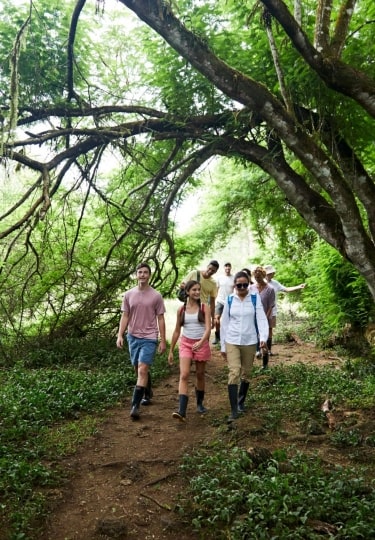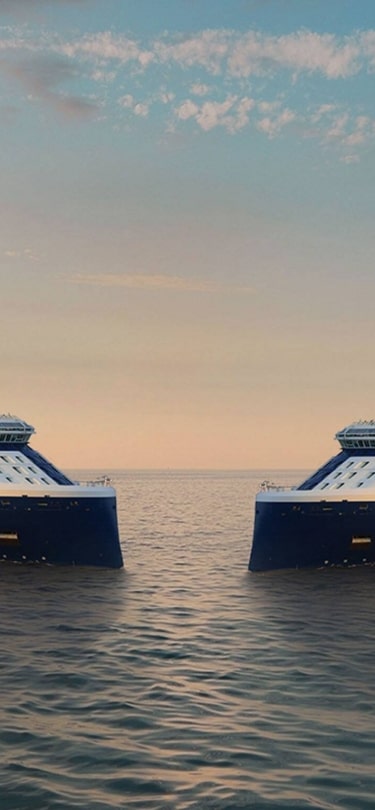There is something extremely satisfying about planning unique family vacations. Whether in destinations that are new to you and your family, or a new take on a previously visited spot, unusual family vacations can be action-packed in nature or culture-driven city escapes.
Look to destinations such as Alaska, Iceland, and the Norwegian fjords for unique family vacations in the great outdoors. The Galapagos Islands are the dream for a wildlife-filled adventure, while cities including Rome and Amsterdam are filled with iconic landmarks and family-friendly museums.
Closer to home, the Caribbean can also provide a family getaway with a difference. Look beyond the region’s dazzling beaches and you will find marine parks, wildlife centers, and rainforest hikes that will leave your family with treasured memories.
Whether you’re traveling with children, teens, or adult offspring in a multigenerational group, take inspiration from these 10 remarkable family vacations for your next family-bonding break.
Go Dog Sledding in Seward, Alaska
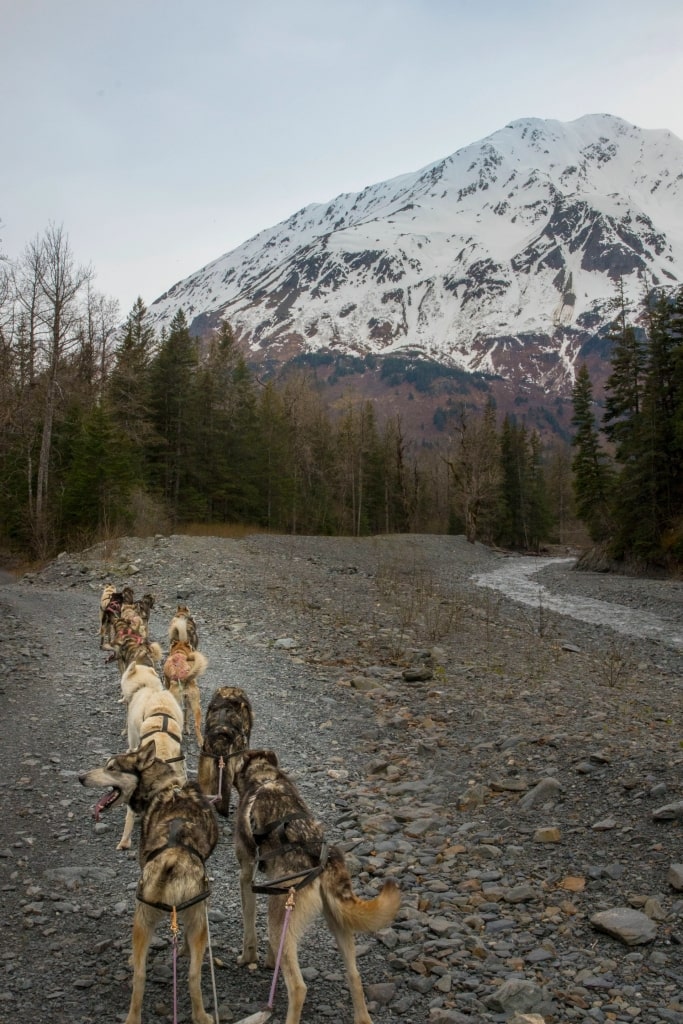
Seavey Homestead in Seward, Alaska
Few family vacations beat the adrenaline rush of dog sledding in Alaska. Between June and August, the family-run Seavey Homestead in Seward operates dog sledding rides on a custom-wheeled sled, which means it can operate even without snow on the ground.
Climb aboard to experience a thrilling two-mile sled ride from Seavey Homestead to the base of Resurrection Mountain. It’s on the edge of the cinematic Kenai Fjords National Park and capped by the vast Harding Icefield, which feeds the many glaciers here.
Mush through the wilderness of Alaska before meeting adorable husky puppies. Visit the huskies’ racing kennels, and learn how Iditarod mushers train and steer the dogs.
Snorkel in a Tropical Marine Park in Bonaire
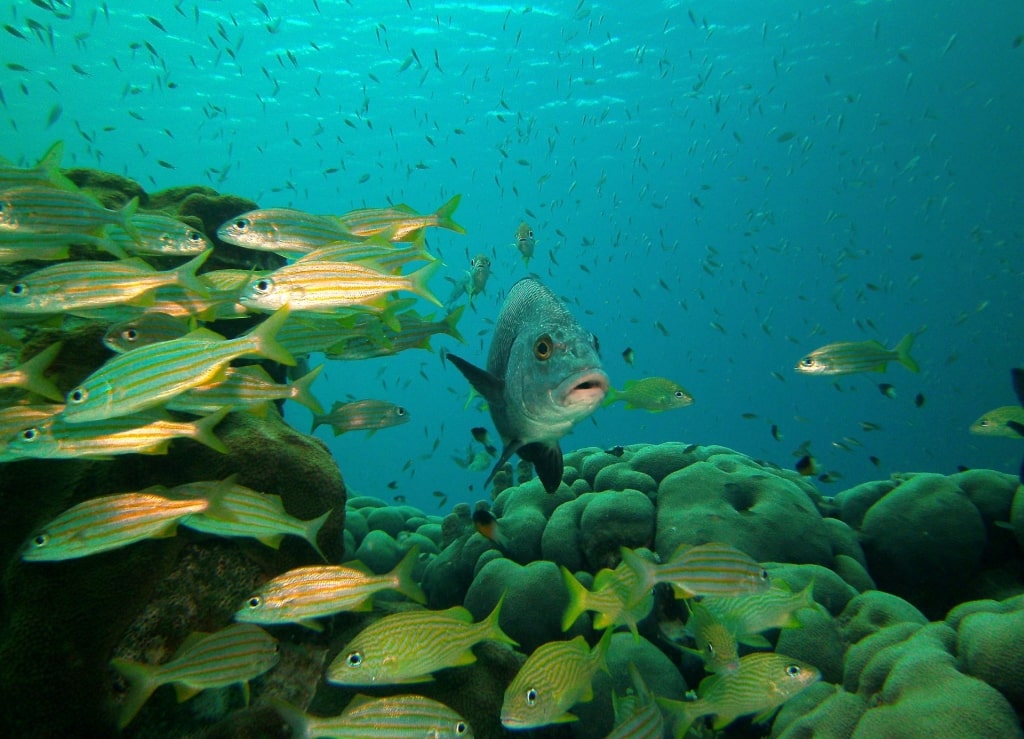
Bonaire Marine Park
All of the brilliant white shores of Bonaire lead directly to its UNESCO-listed Marine Park, which means you will only need a mask, snorkel and fins to experience its kaleidoscope of ocean life.
Bonaire Marine Park also covers the waters around Klein Bonaire—the Caribbean’s largest uninhabited island—off the west coast of the main island. In contrast to the islands’ dry landscape, the water is a dazzling shade of aquamarine, with abundant coral reefs, seagrass beds, and mangroves.
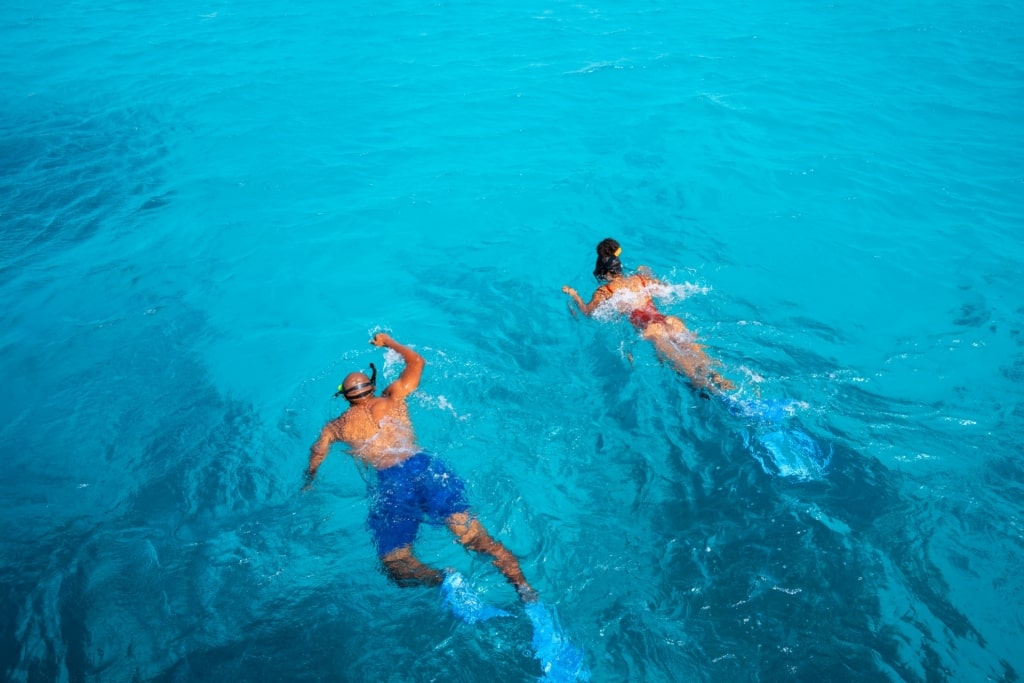
Snorkeling in Bonaire
Wander from shore to sea to snorkel from some of Bonaire’s best beaches—1,000 Steps, Te Amo, and Bachelor’s beaches are all great options close to the capital, Kralendijk.
Dip below the water’s surface to create unforgettable family memories and witness a selection of the 350 reef fish spies and 50 types of stony coral found here, including starfish, nurse sharks, green turtles, seahorses, rays, and schools of tropical fish.
Visit Stonehenge Neolithic Site in England
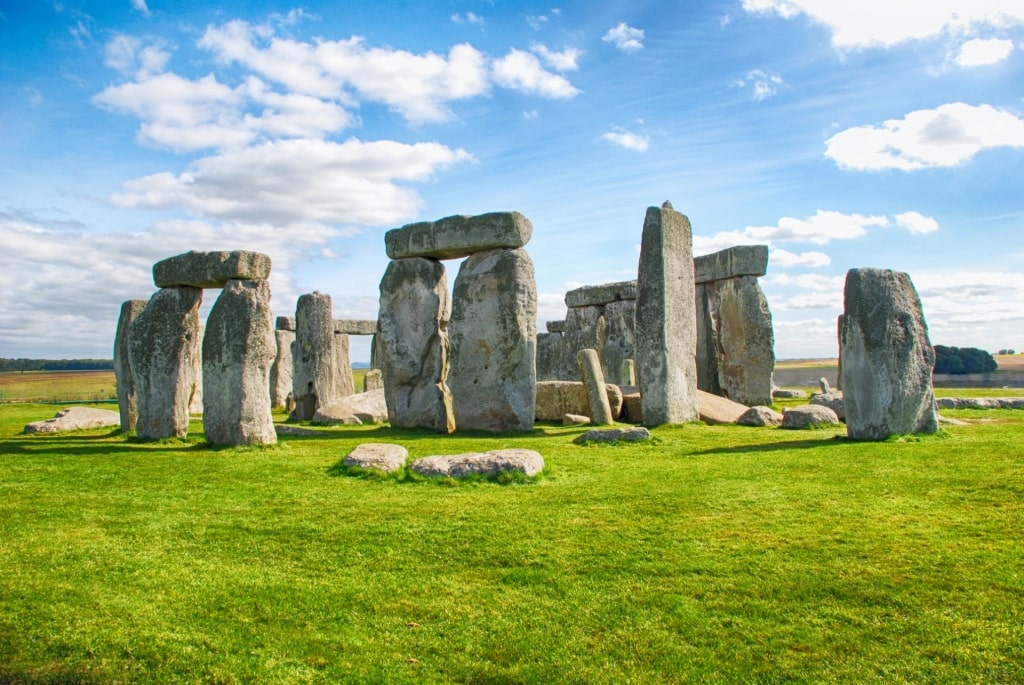
Stonehenge, England
Few destinations evoke the Neolithic period like Stonehenge, one of the world’s most famous stone circles that provides an essential glimpse into the past.
Located in the bucolic Wiltshire countryside, less than an hour from Southampton, this towering stone circle is shrouded in mystery. It’s thought to be around 4,500 years old, while nearby burial mounds date to the Bronze Age.
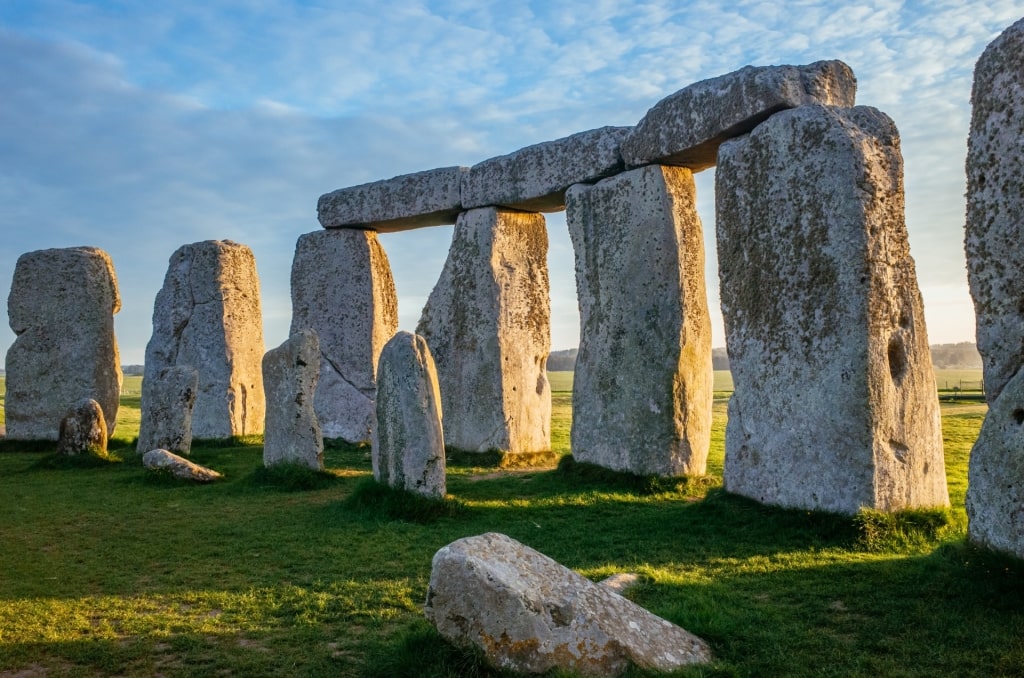
Stonehenge, England
Remarkably, the hulking gray boulders used to build the stone circle were transported from Wales, around 150 miles away. The purpose of the circle is unknown, but it’s believed to be a pagan place of worship aligned with the movement of the sun. Every year, on midsummer’s day, thousands of devotees gather here to watch the sunrise.
There’s a fantastic true-to-life Neolithic village to explore, an exhibition featuring archaeological objects uncovered at the site, including a fascinating forensic reconstruction of a Neolithic man, plus a gift shop and a café.
Climb Spain’s Highest Peak in Tenerife
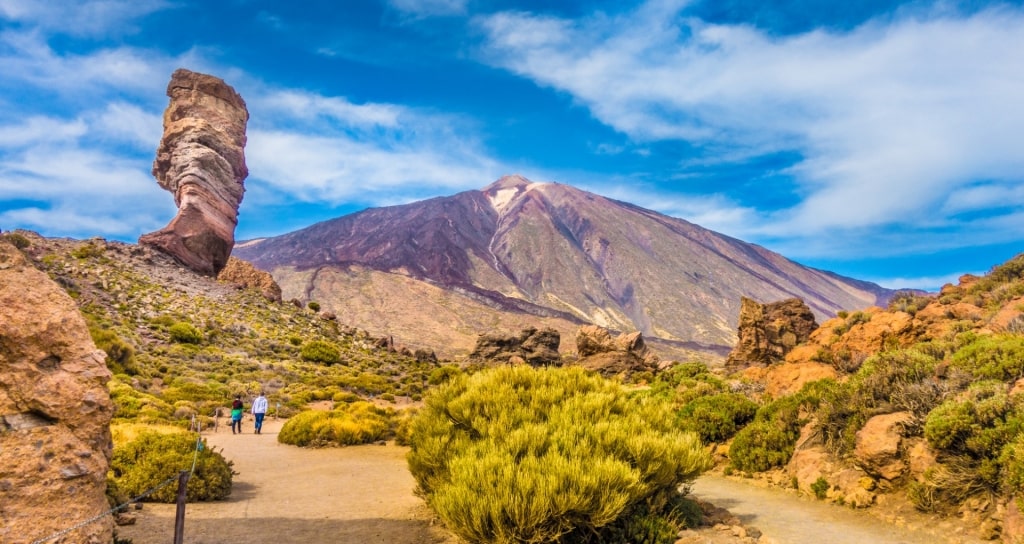
Teide National Park in Tenerife, Canary Islands
Looming large on the island of Tenerife—the biggest and most densely populated of Spain’s Canary Islands—is Mt. Teide, at the heart of Teide National Park.
The peak of this funnel-shaped volcano is at 12,188 feet, making it Spain’s tallest mountain. But because its base is the ocean floor, from which it rises 24,600 feet, Teide is technically the third-tallest volcanic structure in the world. There’s a second volcano within the national park; Pico Viejo lies west-southwest of Mt. Teide. With a height of 10,285 feet, it is Tenerife’s second-tallest peak.

Cañada Blanca in Tenerife, Canary Islands
The sensational landscape around the two volcanoes includes vast lava fields and towering, ochre-hued rock formations, with excellent amenities for visitors, including a network of hiking and driving routes.
There are two visitor centers—El Portillo and Cañada Blanca—within the park that reveal more about its geology and volcanic activity, including an account of Teide’s last eruption, in 1909.
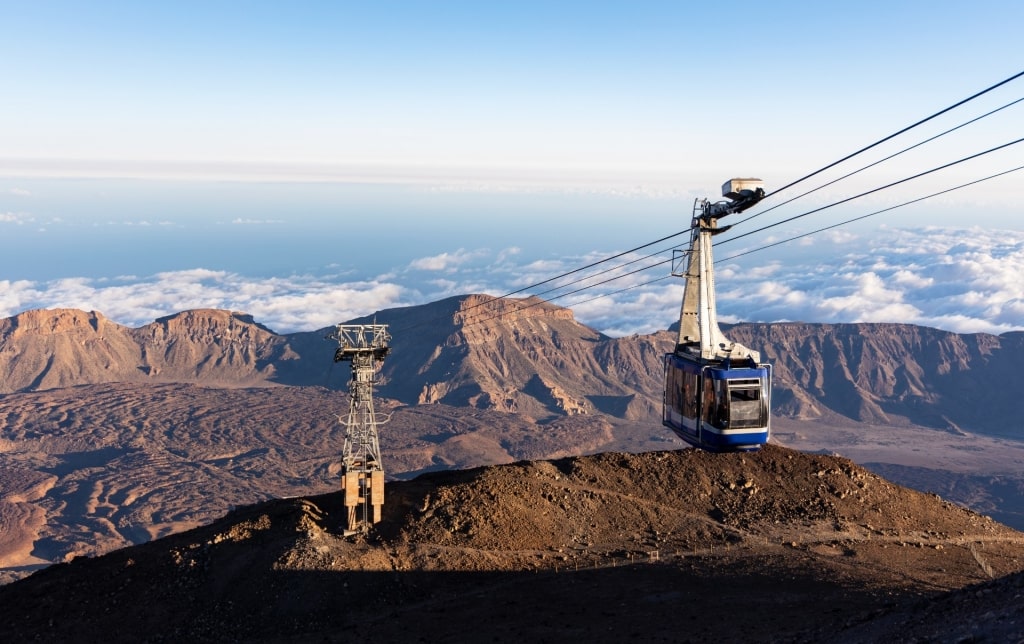
Teide Cable Car in Tenerife, Canary Islands
For an unforgettable family day out, one of the best things to do in Tenerife is to join an eight-minute cable car ride close to Teide’s summit. Witness jaw-dropping canyons, Pico Viejo, and the sapphire-blue of the Atlantic Ocean on a clear day.
In winter—and Tenerife is a popular winter sun destination—the volcano will be wearing a snowy cap. So you really can say you’ve thrown snowballs in the morning and sunbathed on the beach in the afternoon.
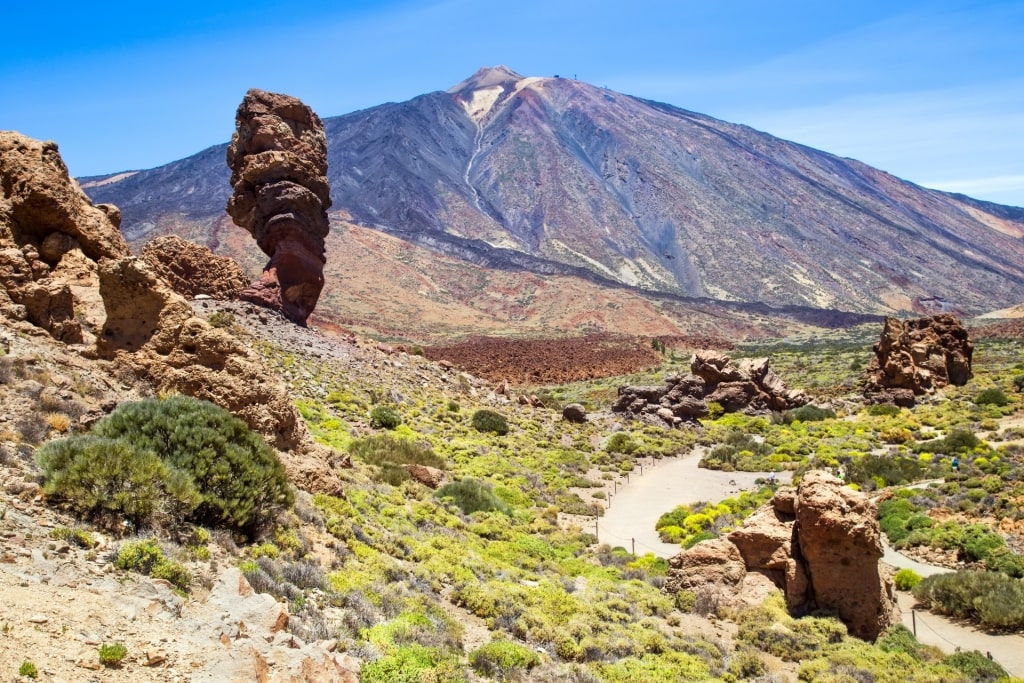
Los Roques de Garcia in Tenerife, Canary Islands
There are four main hiking routes to choose from for active families. The most challenging is, naturally, the one to Teide’s summit, which requires a permit. Others are less taxing, including a route via Los Roques de Garcia, near the Cañada Blanca visitor center. Visit the park’s La Ruleta access point and explore the red volcanic rock formations up close.
Indulge in a Day at Iceland’s Blue Lagoon
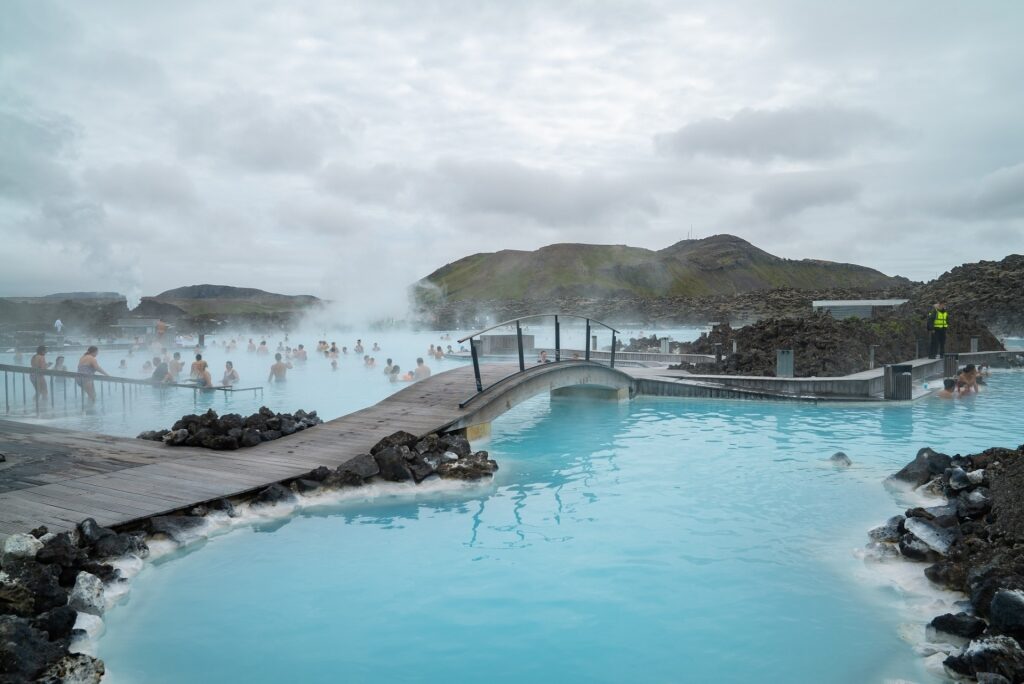
Blue Lagoon, Iceland
A unique experience that every travel-loving family should try at least once is to bathe at the geothermally-heated Blue Lagoon, near the town of Grindavik, on the Reykjanes Peninsula of Iceland.
This family-friendly attraction is open to children aged two and older, making it suitable for families with children of most ages.
The open-air setting is magical, including craggy black rocks surrounding a pool of steaming milk-blue water, heated by the nearby geothermal power plant. The Icelandic hot spring is said to have healing qualities thanks to its silica and sulfur content that can aid skin conditions such as psoriasis.
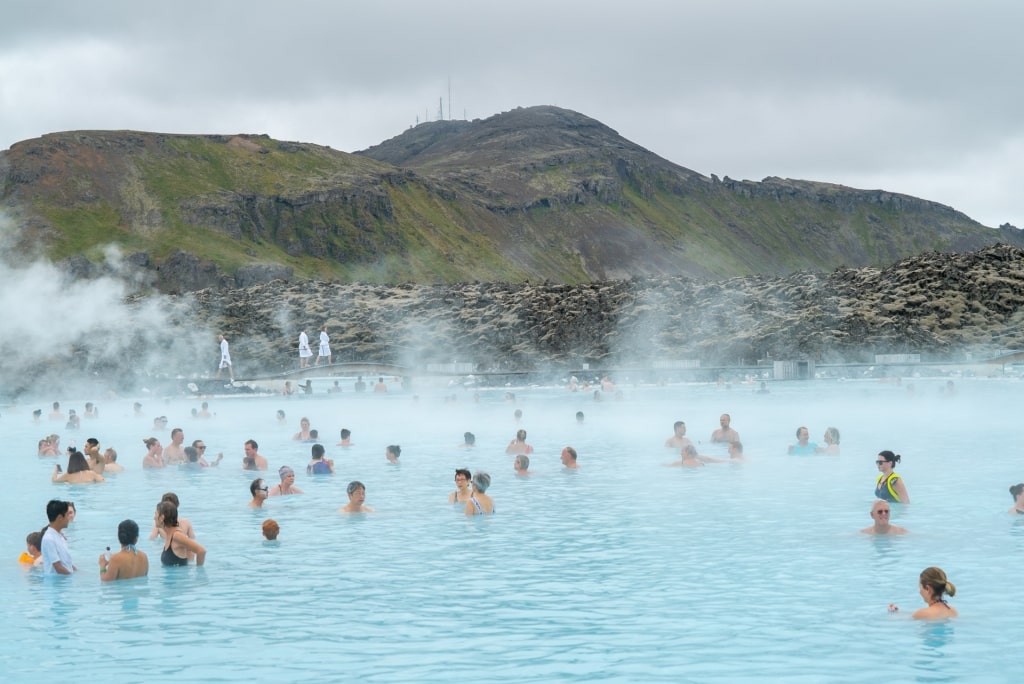
Blue Lagoon, Iceland
The soothing water, heated to 98–102°F, is blissfully relaxing. Bathe in the warm lagoon and lather silica mud found on the sides of the pool onto your skin. There’s a swim-up bar, too, with entry into the Blue Lagoon including a complimentary drink for every guest, including beers and sodas.
There’s a fantastic restaurant, Lava; the Blue Cafe; and Lagoon Spa for mud-based face and body treatments. There’s also a shallow wading area and a separate children’s pool for little ones.
Cruise or Kayak the Canal Ring in Amsterdam
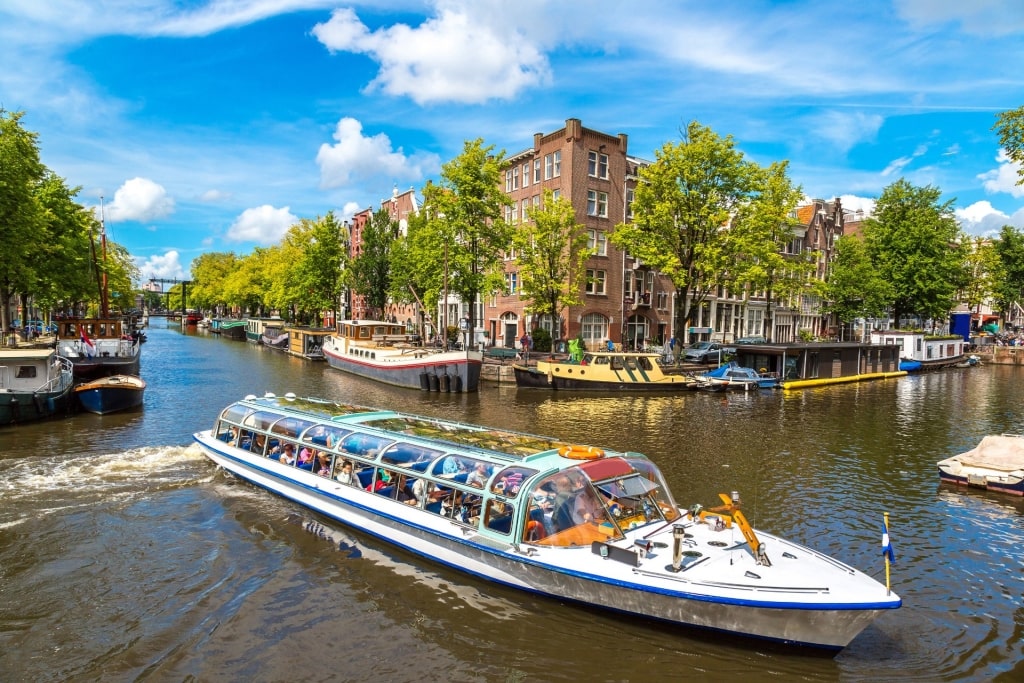
Canal Ring, Amsterdam
In historic Amsterdam, the capital of the Netherlands, one of the great ways of entertaining the family is to see the city’s ring of canals from the water.
Learn about how a network of 165 canals was engineered to wrap around the medieval old town in the late 16th and early 17th centuries.
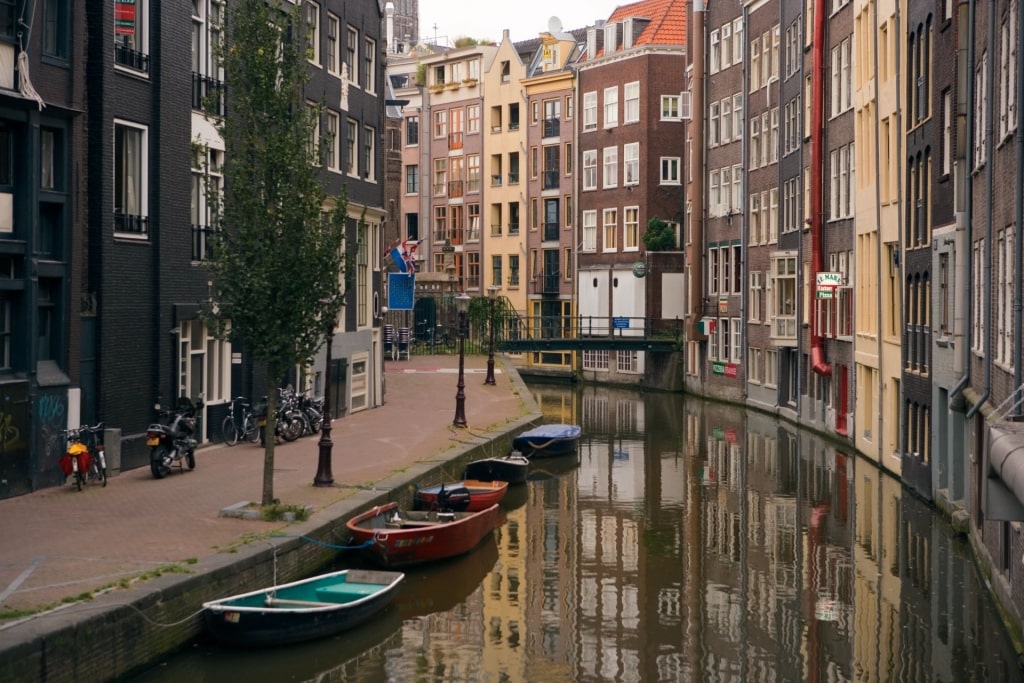
Canal Ring, Amsterdam
An all-weather, glass-roofed boat is one of the more leisurely ways of cruising Amsterdam’s canals. See gothic churches, grand merchant houses, and pretty gabled houses that line the waterways in the districts of Herengracht, Keizersgracht, and Prinsengracht.
Learn about landmarks such as Anne Frank House in Downtown Amsterdam, the futuristic-looking, Renzo Piano-designed NEMO Science Museum, and the exquisite Hortus Botanicus Amsterdam as you glide along the canals.
More adventurous families could take to the water by kayak, paddling along the canals with a guide. Exploring this way gives you a greater sense of connection to the city, and its sights and smells.
Go Whale Watching in Iceland
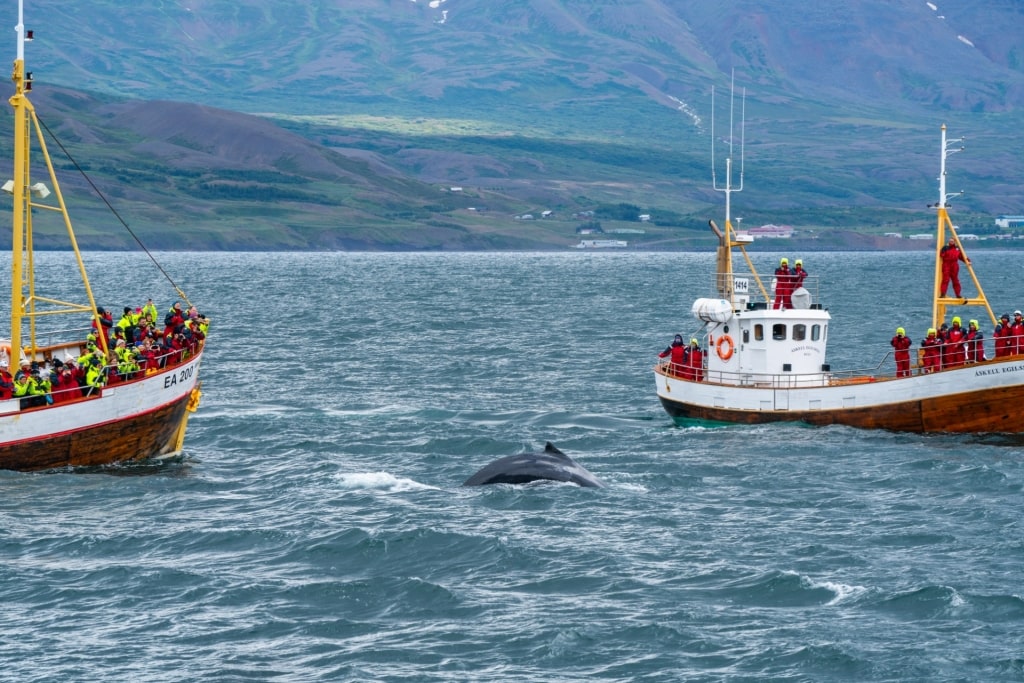
Whale watching in Akureyri, Iceland
Seeing whales in the wide-open ocean is a bucket-list experience. Tick it off with your family on vacation in Iceland, one of the best places to see whales.
This small North Atlantic island nation attracts 24 cetacean species ranging from harbor porpoises to sperm whales.
Some can be seen year-round, such as minke whales and harbor porpoises, but to enhance your chances of spotting a wider variety of these majestic creatures, head to Iceland in summer.
Join a guided whale-watching trip on the Eyjafjörður fjord from Akureyri in northern Iceland to look for acrobatic humpback whales breaching and tail-slapping. You might also see white-beaked dolphins and orcas.
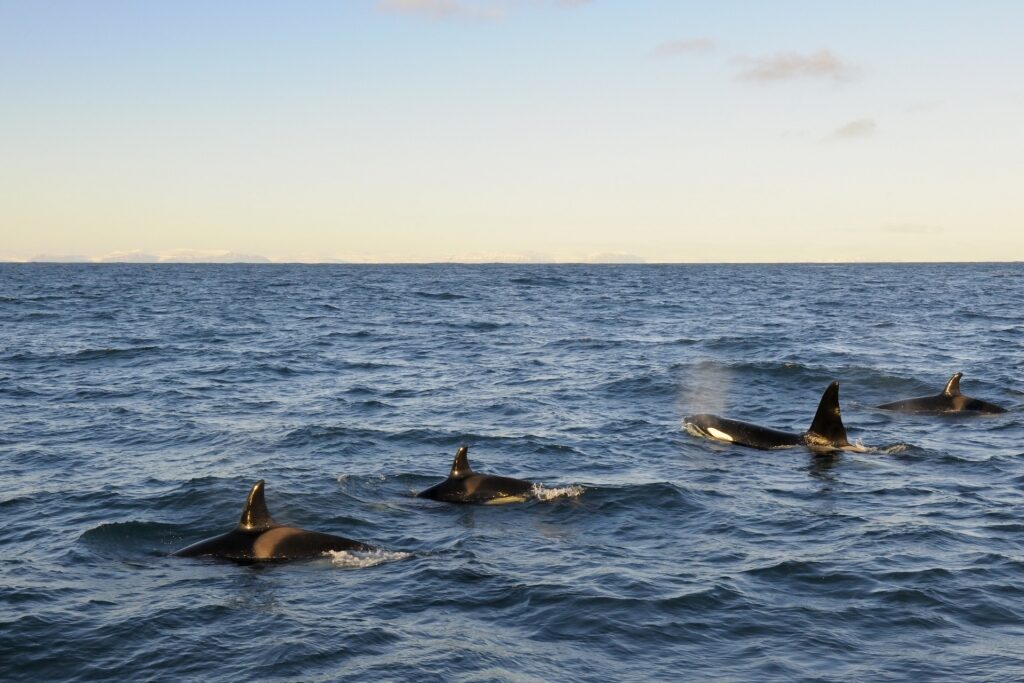
Orcas in Iceland
Around 5,000 orcas live in the waters around Iceland year-round, though they tend to come closer to shore during summer. It’s not unusual to spot the black-and-white form of an orca zooming straight underneath your whale-watching boat.
There’s also a chance of spotting enormous blue and fin whales during summertime, though sightings are far rarer than other whale species. You will likely see some of Iceland’s colonies of breeding puffins during summertime, too.
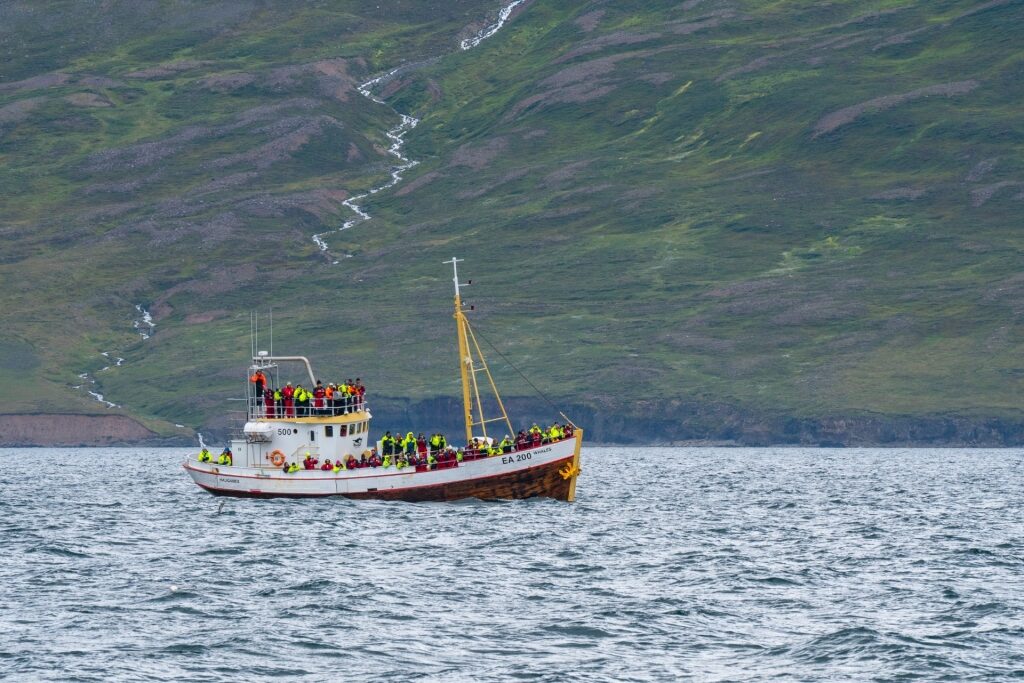
Whale-watching tour in Iceland
Whale-watching tours don’t just take you out into the Icelandic fjords and ocean, but teach travelers about whales’ habitat, what they feed on, and the history of whales in Iceland.
Impress your troop further by taking them to Whales of Iceland, a Reykjavík museum with 23 life-size whales on display.
Roam Krka National Park in Croatia
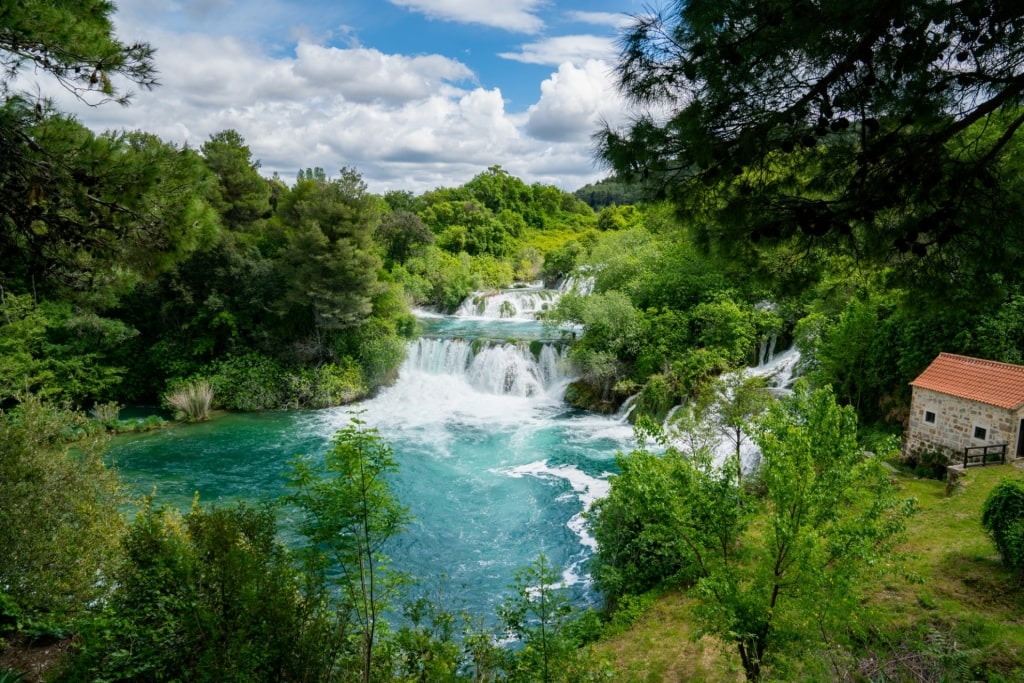
Krka National Park, Croatia
Discovering the enchanting Krka National Park is one of the best things to do in Croatia for a unique family vacation, particularly if your family loves the great outdoors.
This vast UNESCO nature reserve near Split covers around 27,000 acres, with the Krka River cutting through the center of the park. The river is surrounded by dense forest, punctuated by green pools and cascading waterfalls, with caves, monasteries, and ruined fortresses dotted around its edges.
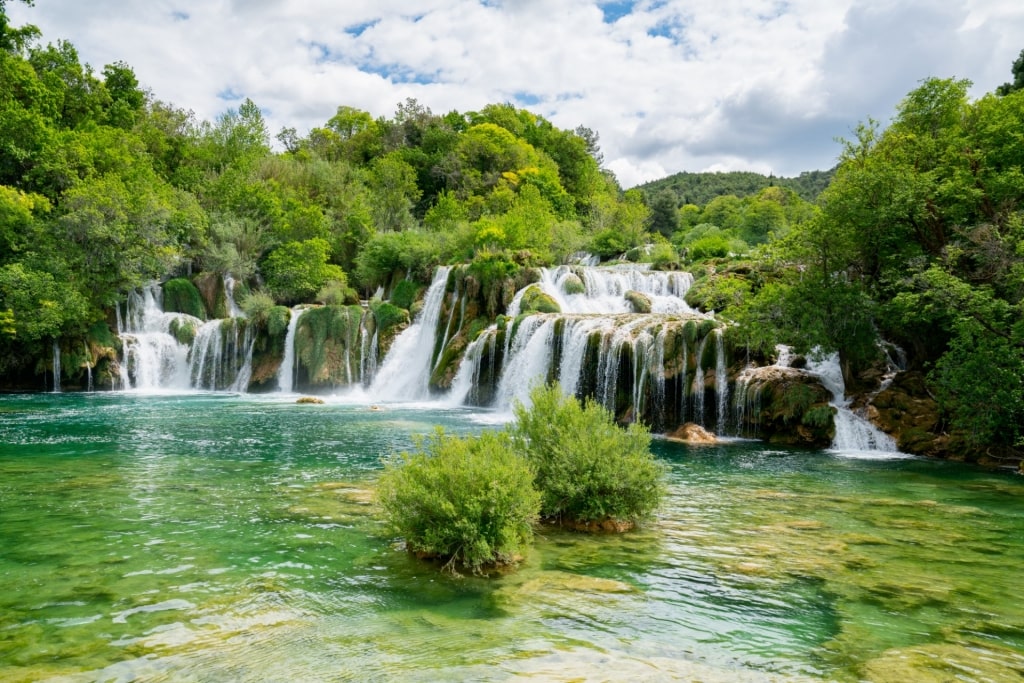
Skradinski Buk in Krka National Park, Croatia
Reward your travel companions with views of Krka’s cascading waterfalls, including Skradinski buk, the longest waterfall on the Krka River, with a lake formed above it. A further eight miles inland is the breathtaking Roški slap waterfall.
Wander the wooden walkways around the water and soak in the scenery. The falls feature moss-covered ridges, caves, and shallow streams, with the watery landscape enjoyed by dragonflies, butterflies, green frogs, coots, and nightingales.
Travelers can take a boat ride from Skradinski buk through the Među Gredama canyon to Roški Slap waterfall. The journey lasts four hours and includes a visit to Visovac Island, home to a Franciscan monastery encircled by a protective ring of tall trees.
Check Out Maho Beach in St. Maarten
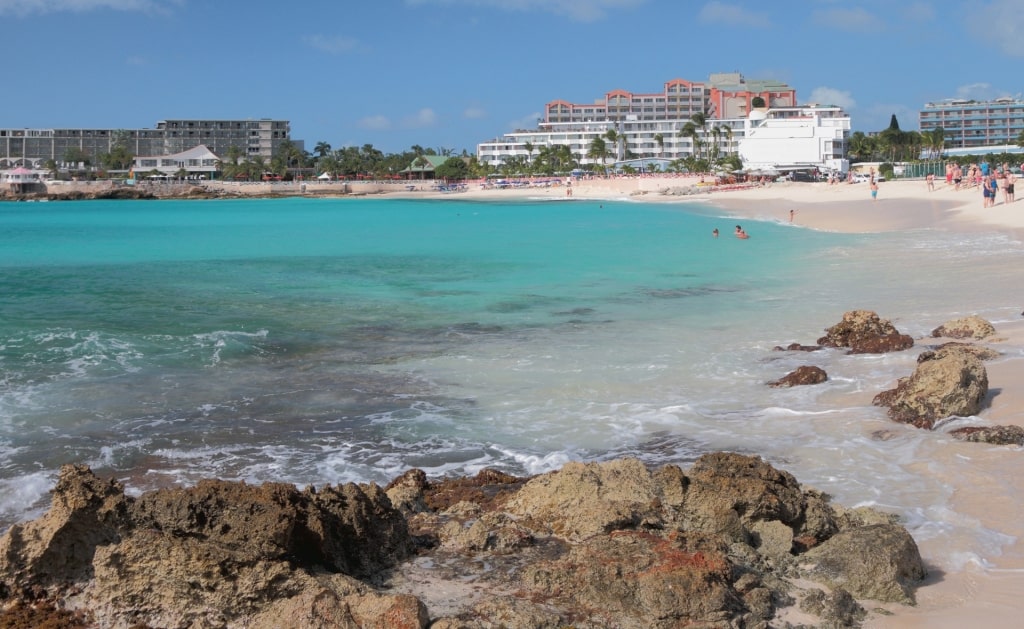
Maho Beach, St. Maarten
The Caribbean offers thousands of sublime tropical beaches to choose from, so what makes Maho, on the island of St. Maarten, a unique family vacation destination?
Not only is Maho’s sand silky soft and the water bright turquoise, but the island’s airport, Princess Juliana International, lies immediately behind it, with planes taking off and landing right behind the shore. In fact, there’s just a narrow road and wire fence separating the end of the runway from the beach in St. Maarten.
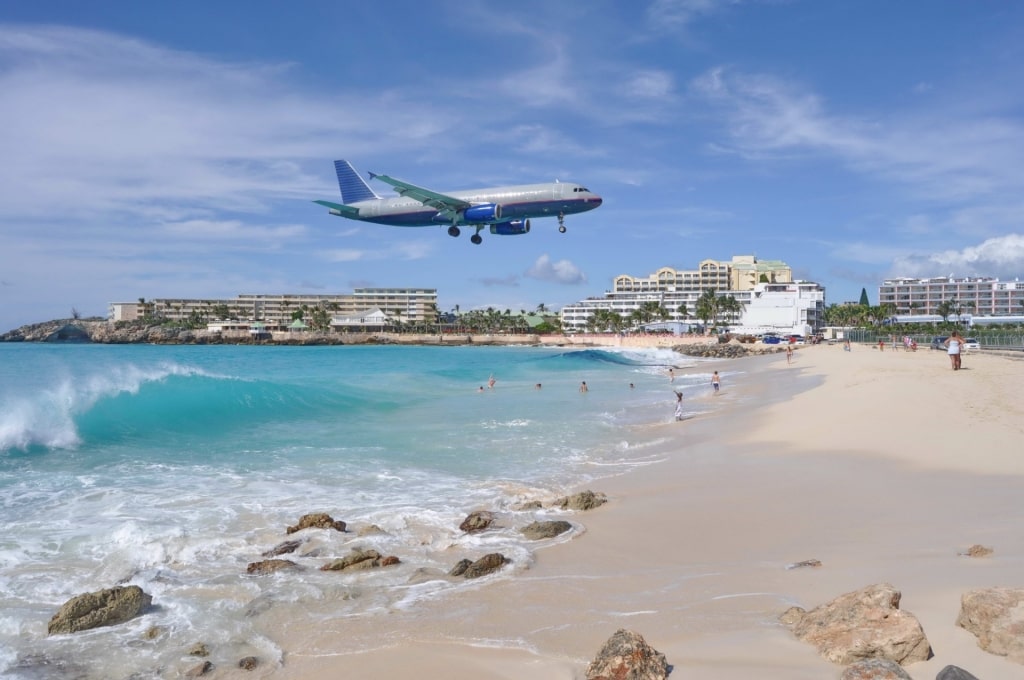
Maho Beach, St. Maarten
The proximity of the airport’s runway creates a spectacular overhead display for beachgoers, with plane spotters able to gaze up and see, in detail, the underbelly of low-flying aircraft. The arrival and departure of huge jets is accompanied by cheers and Mexican waves and there’s a party vibe all day long.
Enjoy a bite to eat at Sunset Beach Bar, where a surfboard-turned-chalkboard displays the flight schedule for each day, and the pizzas are named after airlines.
Read: Best Things to Do in St. Maarten
Explore Mayan Antiquities in the Yucatán Peninsula
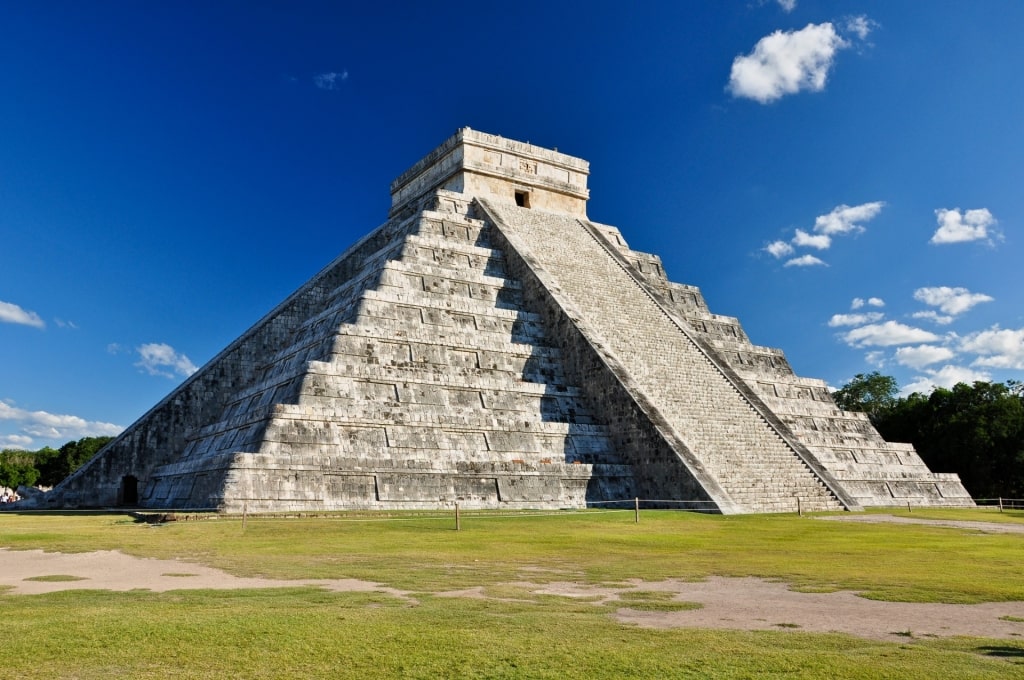
Chichen Itzá, Mexico
Give your offspring something to talk about when they return to class with a more unconventional beach getaway on the Yucatán Peninsula.
Your family could smoothly segue from languid beach days to exploring ancient Mayan ruins, including Chichen Itzá, regarded as one of the New Wonders of the World by UNESCO. Lying around two hours inland from the Caribbean coast, Chichen Itzá is around 1,000 years old and a masterclass in ancient Mayan-Toltec architecture.
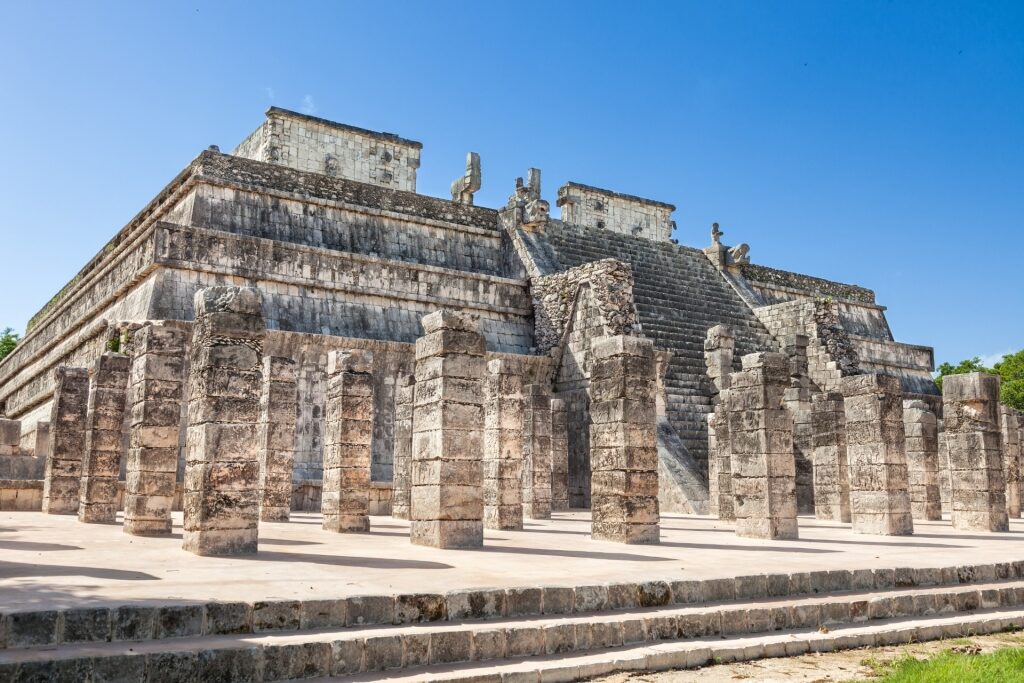
Temple of the Warriors, Mexico
One of the most beautiful places in Mexico, Chichen Itzá is dominated by El Castillo (the Temple of Kukulkan), a stepped pyramid that is most probably the vision you conjure when you think of a Mayan temple.
There’s also the Temple of the Warriors, El Caracol Observatory, Temple of Jaguars, and Platform of Venus to explore at this glorious archaeological wonder.
Connect with Nature in the Galapagos Islands
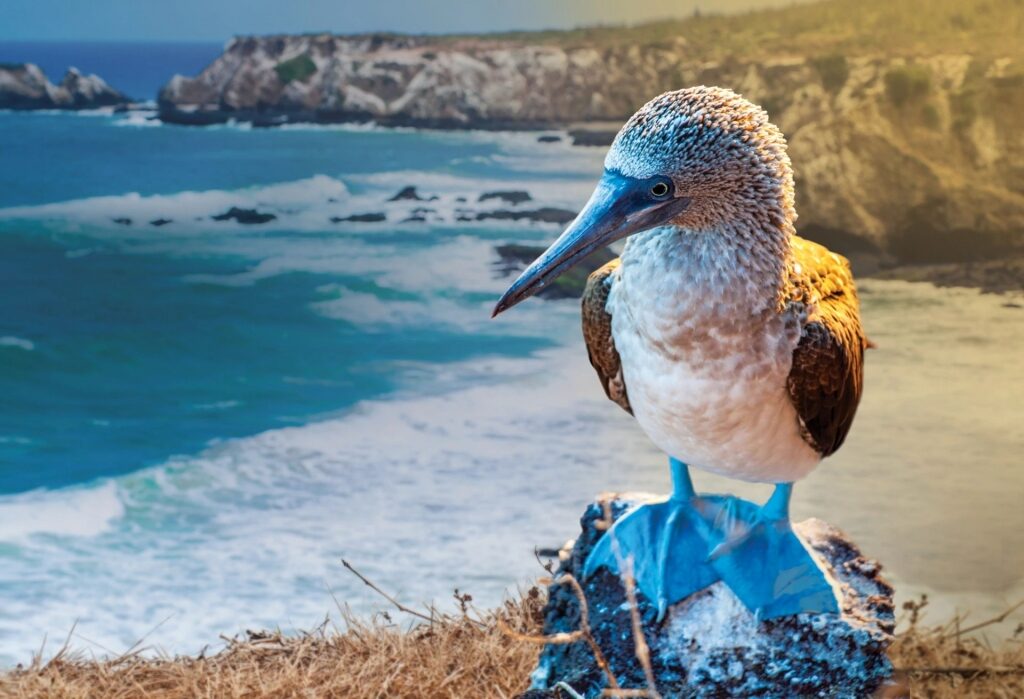
Blue-footed booby in the Galapagos
For a truly special family vacation, the Galapagos Islands offer a kaleidoscope of extraordinary nature. Arid, remote, and teeming with wildlife, this protected archipelago is scattered 600 miles off Ecuador in the Pacific Ocean.
The islands are a nature-lover’s dream, boasting hardy vegetation, serrated rock formations, dramatic volcanoes, and sweeping blond beaches in the Galapagos. Among the Galapagos’ staggering array of wildlife are sea lions, flightless cormorants, Galapagos hawks, land and marine iguanas, and giant tortoises. Under the water, look for stingrays, Galapagos penguins, sharks, and sea turtles.
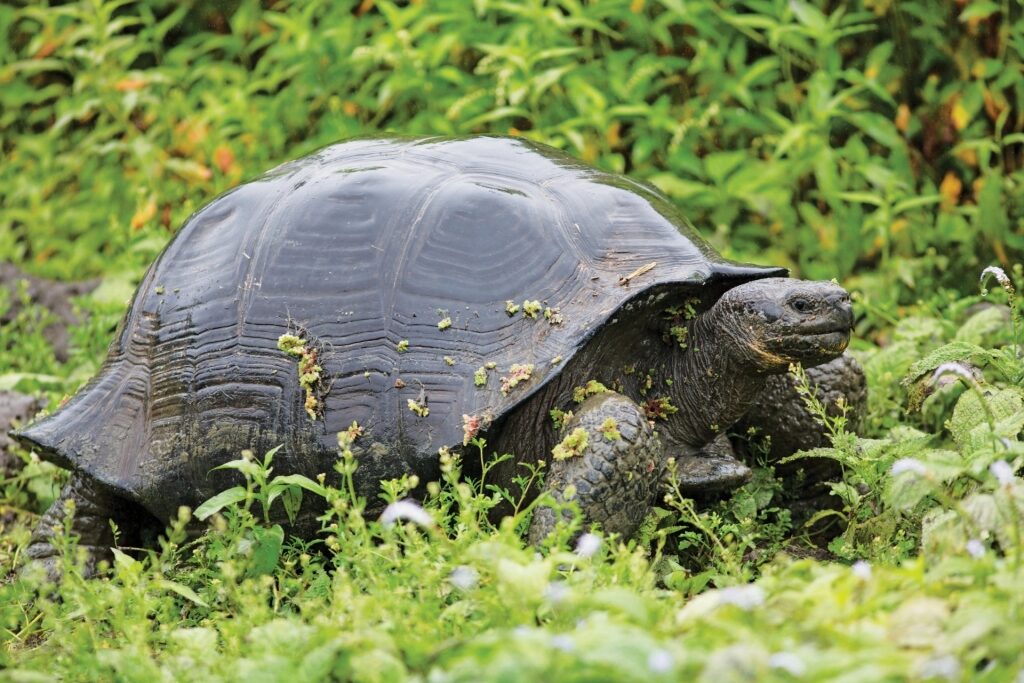
Galapagos tortoise
In fact, it was here in the Galapagos Islands, during a five-week expedition in 1835, that Charles Darwin formed his theory of evolution by natural selection. Visit the Charles Darwin Research Station on Santa Cruz Island—where there’s a giant tortoise breeding program, exhibition hall, and native garden.
On Las Bachas, a white beach near a salty lagoon on the north coast of Santa Cruz, spot Sally lightfoot crabs, flamingoes, and blue-footed boobies.
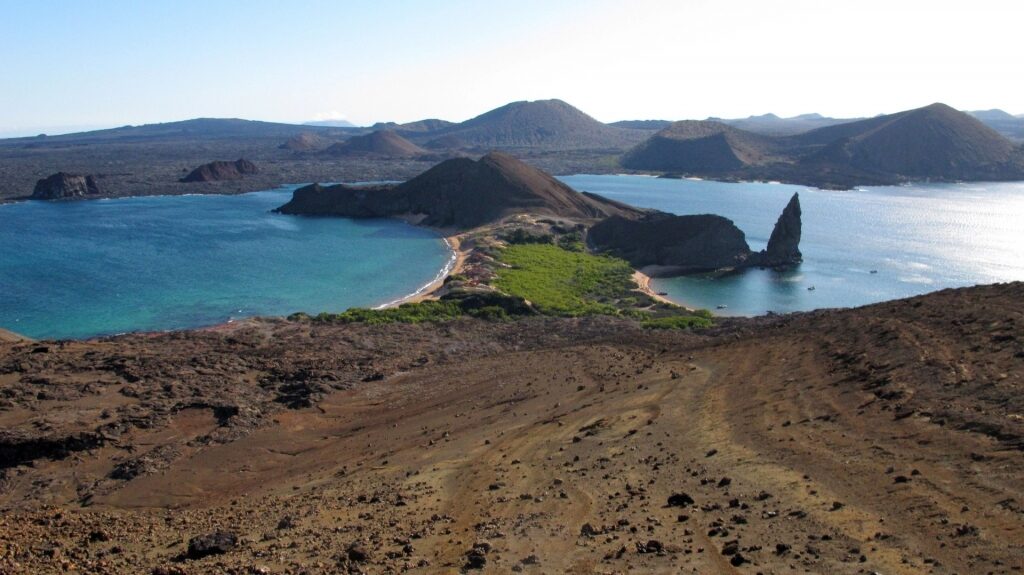
Bartolomé Island, Galapagos
Tiny Bartolomé Island is dominated by a 374-foot volcano. Reach the summit by walking a planked track to take in breathtaking views of neighboring islands, including Rabida, Santiago, Baltra, and Santa Cruz. Near Pinnacle Rock, on the north shore, snorkel in search of white-tipped sharks and green tea turtles.
Read: Best Vacations With Teens
Splash at Thrill WaterPark in CocoCay in the Bahamas
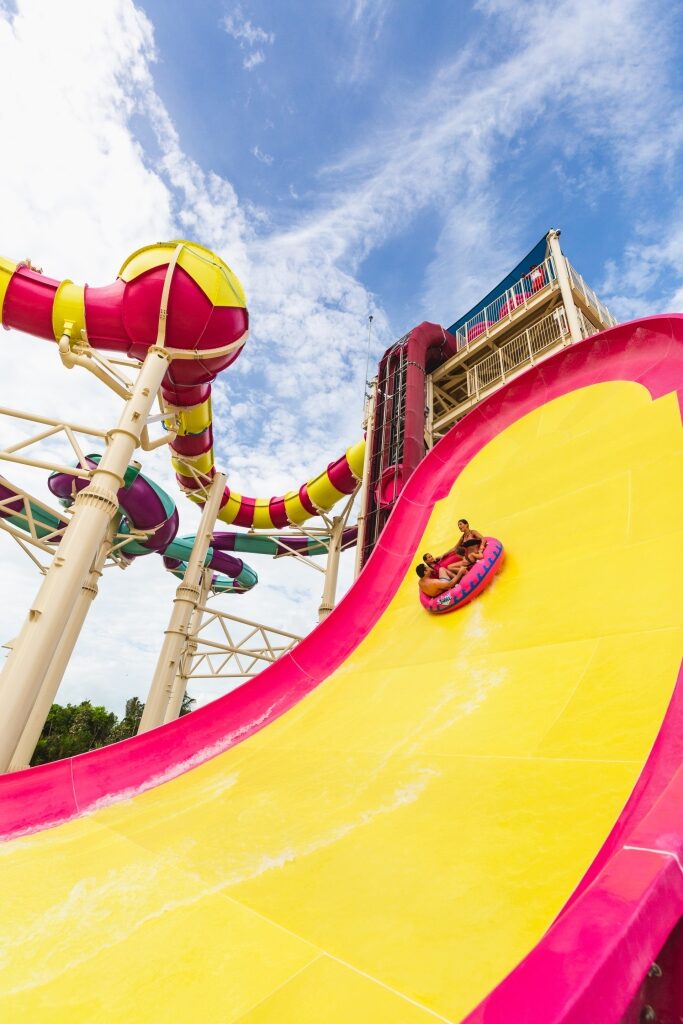
Thrill WaterPark in CocoCay, Bahamas
Some of the best family vacations involve indulging in the thrills of exhilarating water parks, such as Thrill WaterPark at CocoCay in the Bahamas.
Home to the tallest waterslide in the Caribbean, the coiling 135-foot Daredevils Peak, Thrill WaterPark boasts multiple more white-knuckle rides at Splash Summit. There’s The Twister, a winding, two-person raft tube slide; the four-person Slingshot; the four-lane Splash Speedway racers; and four-person raft slide, Tailspin.
Jump the waves at the Caribbean’s biggest wave pool and have fun at Captain’s Jill’s Galleon, with water cannons, a splash pad, and kiddie slides. For some downtime, your clan can unwind on a lounge chair or reserve a cabana to bask under the Bahamian sunshine. Fuel up at Snack Shack after burning all that energy on the slides.
Admire the Giant’s Causeway in Northern Ireland
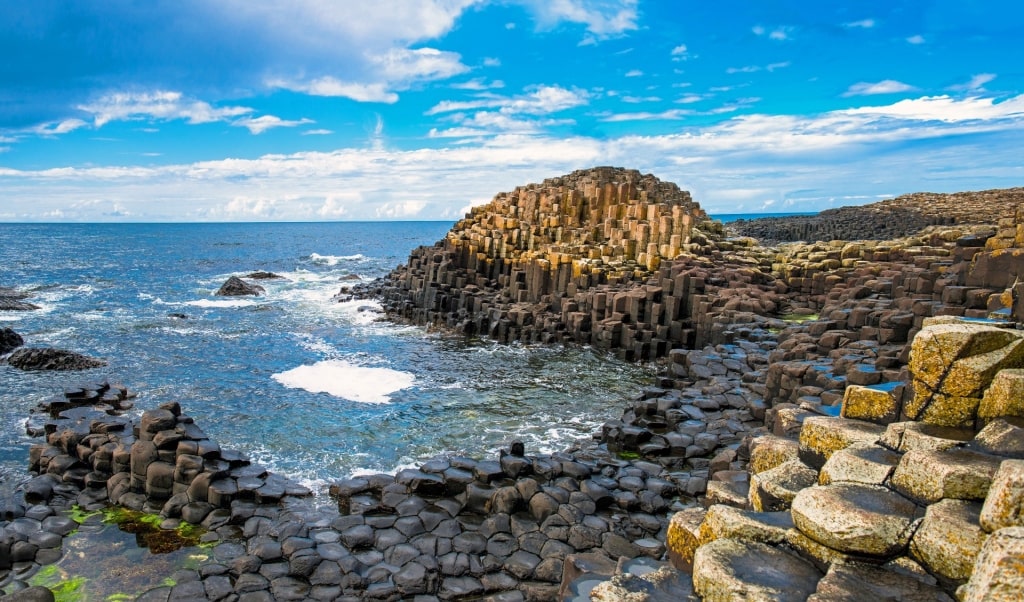
Giant’s Causeway, Northern Ireland
A unique vacation spot for families looking for coastal adventures and nature-filled hikes is the Giant’s Causeway in Northern Ireland.
A visit to the Giant’s Causeway is every young geologist’s dream. This Unesco World Heritage Site lies on the craggy Atlantic coastline, around 60 miles north-northwest of Belfast.
Learn how the Giant’s Causeway’s famous hexagonal basalt columns were formed almost 60 million years ago when present-day Ireland was still attached to North America and Europe but was beginning to tear away. Through cracks in the earth’s surface, molten rock and lava bubbled to the surface.
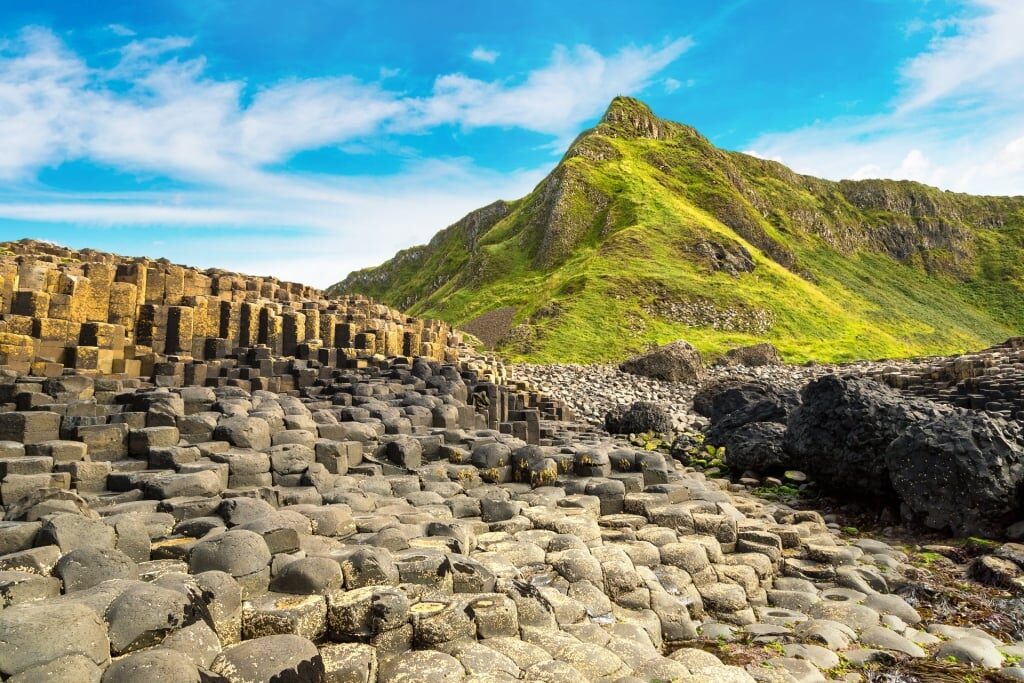
Giant’s Causeway, Northern Ireland
Later, erosion caused rivers to form in the rift valleys, more lava flowed, and the lava rock cooled and eventually cracked, forming even patterns in the rock formations. During the Ice Age, when vast glaciers formed, the top layers of rock were scraped away, exposing the rock that we see today.
Legend tells a different story, however, with a giant named Finn McCool supposedly creating a causeway to cross the Irish Sea to Scotland and face his rival, Benandonner. The Scottish giant is said to have torn up the causeway as he fled back to Scotland, and the giant fossilised imprint of Finn McCool’s boot is referred to as Port Noffer, or “bay of the giant”.
The famed natural landmark is a fascinating place for all ages to explore, hike, and pick up local souvenirs at the gift shop, such as cozy woollen blankets and shortbread cookies.
Discover Lanzarote’s Timanfaya National Park
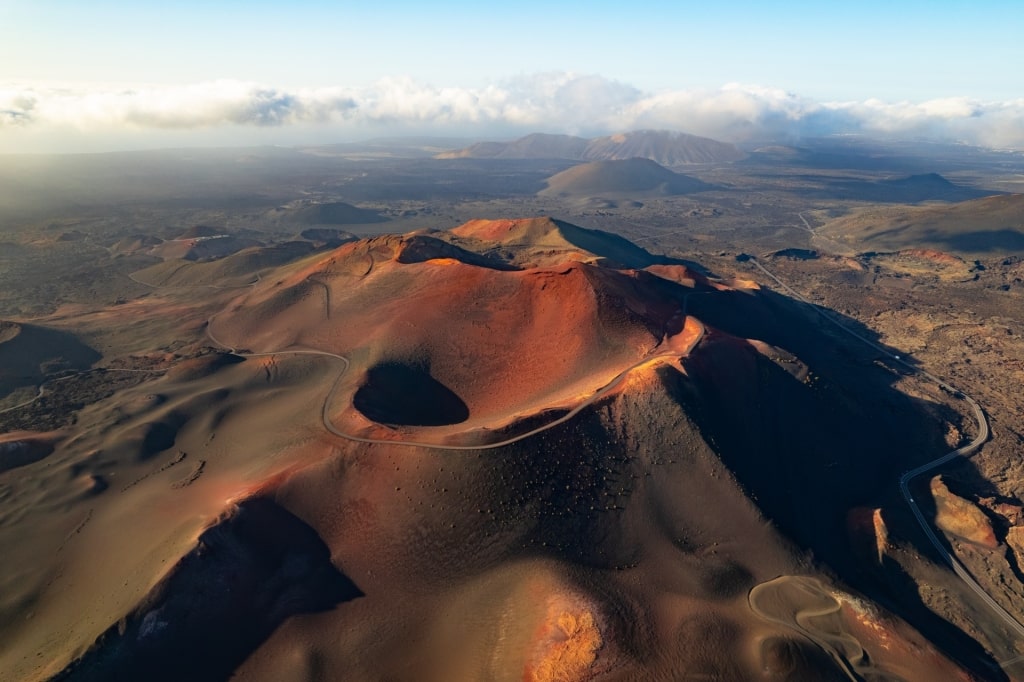
Timanfaya National Park in Lanzarote, Canary Islands
Unique family vacations bring curious, intrepid gangs together—especially when it includes discovering the otherworldly Timanfaya National Park in Lanzarote. Timanfaya is a volcanic area created during a six-year period between 1730 and 1736 when a series of explosive eruptions rocked the island.
The landscape is shaped by soaring volcanic cones, vast lava fields, and rising steam that looks like scenes from Mars.
Designated routes within the park are the best way to explore this Unesco Biosphere Reserve.
First, learn about Timanfaya’s backstory at the Visitor Interpretive Centre of Mancha Blanca, located near the village of Tinajo. There are short audiovisual presentations on the park’s famous volcanic landscape, widely known as Fire Mountains.
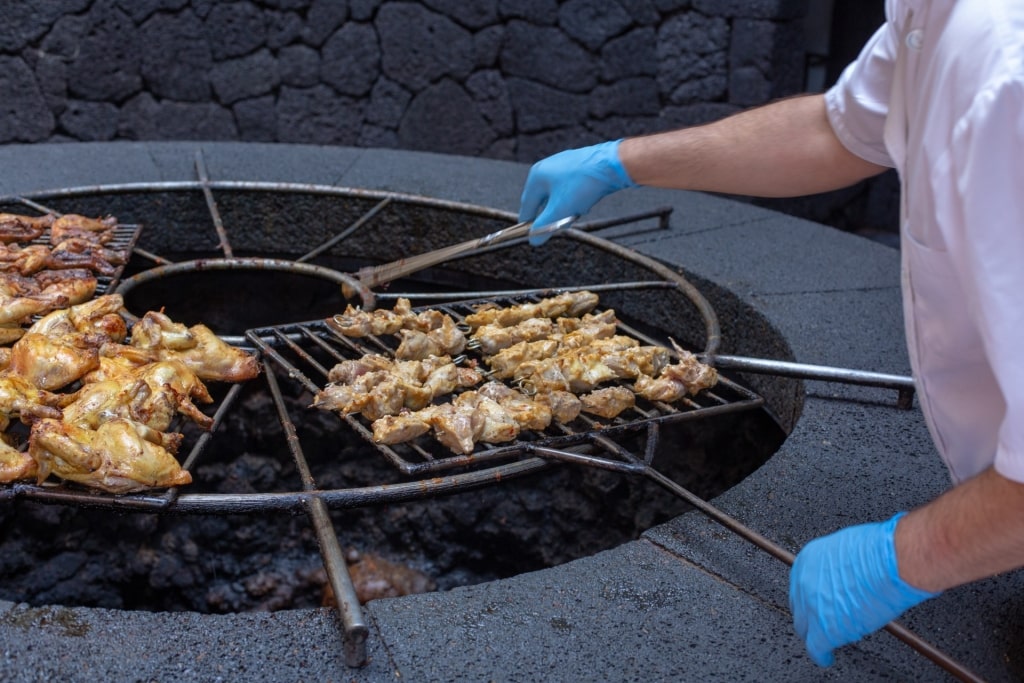
El Diablo Restaurant in Lanzarote, Canary Islands
A highlight for families is witnessing the Islet of Hilario, where park guides demonstrate the geothermal heat by pouring water into a hole in the ground, only to have it shoot out as steam in a mini-geyser seconds later. After, sample authentic Canary Islands cuisine and dine at El Diablo Restaurant, where chefs put on a theatrical show, cooking sizzling steaks using geothermal heat from the ground.
Sink Your Toes Into Maspalomas Beach in Gran Canaria
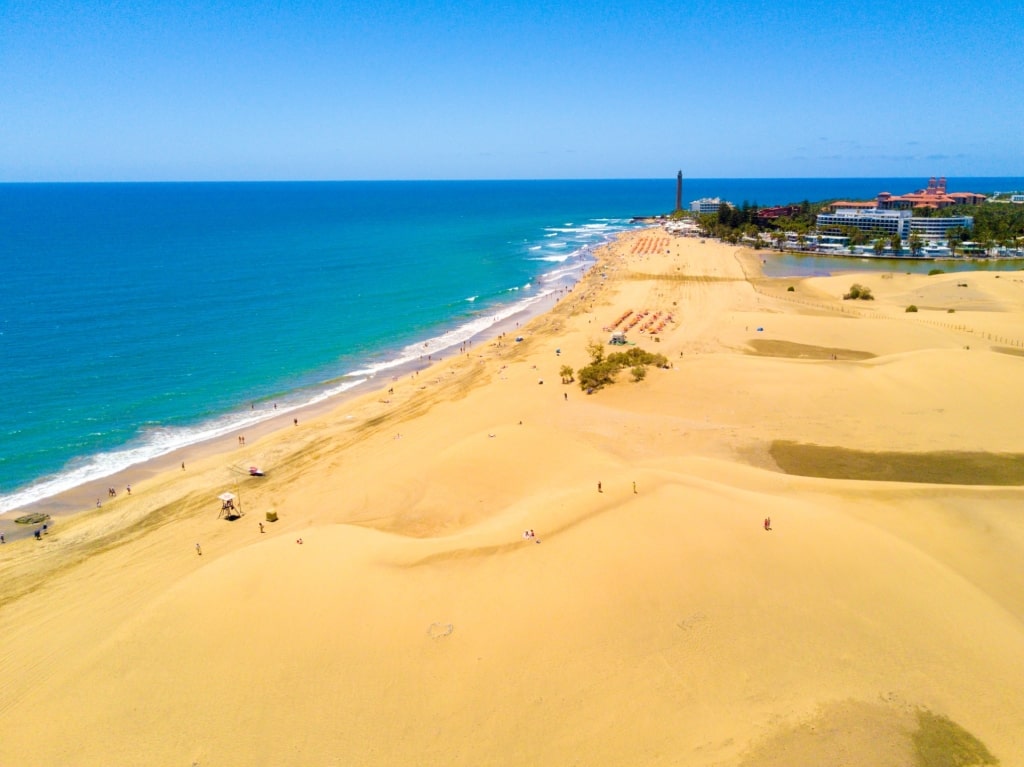
Maspalomas Beach in Gran Canaria, Canary Islands
In the Canary Islands, the silky Maspalomas Beach of Gran Canaria stretches for miles, bending around the southern tip of the island. Maspalomas Beach offers ample space to stretch out as a family, play pickleball, and build sandcastles on the golden sand, between dips in the invigorating Atlantic Ocean.
Flanking the beach is the 400-hectare Maspalomas Nature Reserve, a Sahara-like dune system of rolling dunes, tufted with vegetation.
There’s a brackish lagoon, home to migratory birds such as grey heron and little egret, and an oasis-like palm grove. Stick to the designated paths to wander through the protected dune system and create wonderful family memories.
Explore The Baths on Virgin Gorda
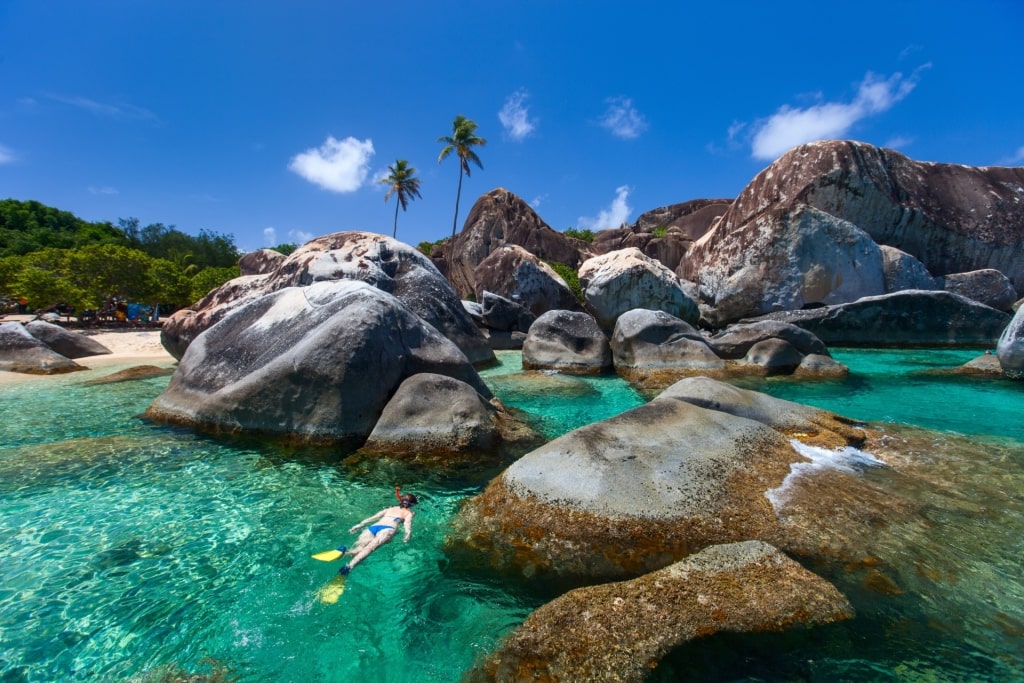
The Baths on Virgin Gorda
Among the best warm-weather unique family vacations are the many delicious Caribbean islands, including Virgin Gorda, the third largest of the British Virgin Islands.
The Baths is a series of giant, tumbled granite boulders disguising gin-clear lagoons and cool caves. Scenes here are cinematic, with the layers of volcanic rock in stark contrast to the white shore and turquoise water.
There’s a trail to follow that takes you wading through the shallow water, around boulders, and up steps while holding onto the rope handrail. Clamber around natural rock pools and under the boulders, where caves are lit by shafts of sunlight.
Swimming here is a memory-making experience. It’s not practical to take anything much with you as you will get wet, but pack snorkels, masks, and a camera in a waterproof housing.
Experience the Golden Circle Route in Iceland
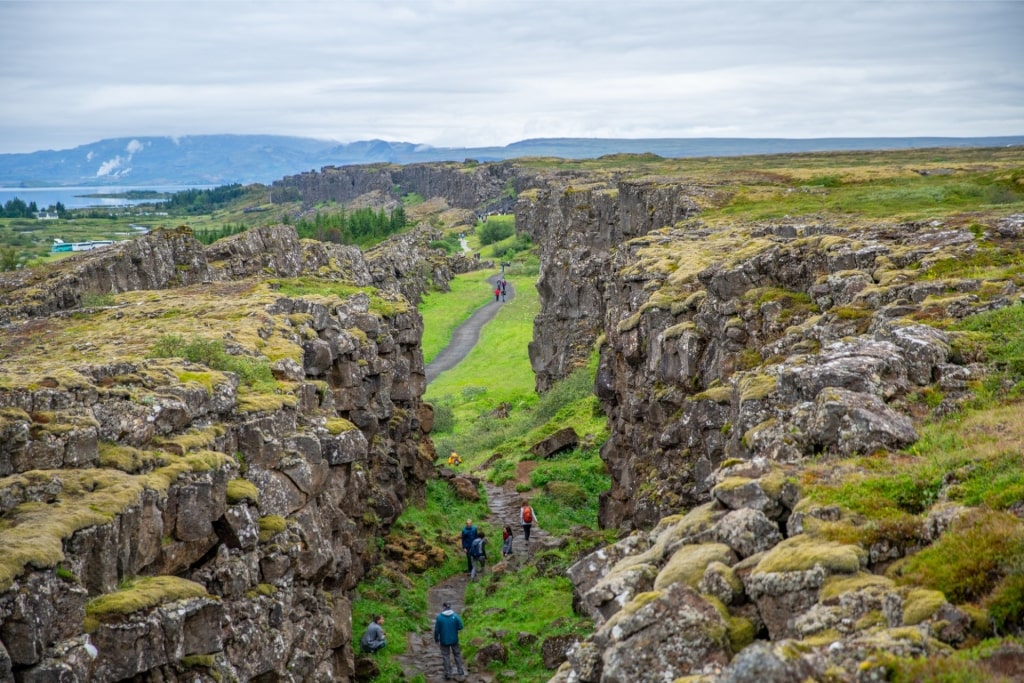
Thingvellir National Park, Iceland
Unique family vacations include experiencing Iceland’s breathtaking Golden Circle, a 155-mile route from Reykjavik that loops in Thingvellir National Park, the Geysir geothermal area, and Gullfoss waterfall.
As ice melts in spring, the waterfalls in Iceland are at their most powerful, including Gullfoss, around 75 miles from Reykjavík. These fast-flowing falls froth with 100,000 liters of glacial water during summer, dropping 105 feet in two tiers from the river Hvítá into the canyon.
Wear raincoats so you can enjoy feeling the refreshing spray—while staying dry underneath—before visiting Geysir geothermal area to witness the active Strokkur geyser.
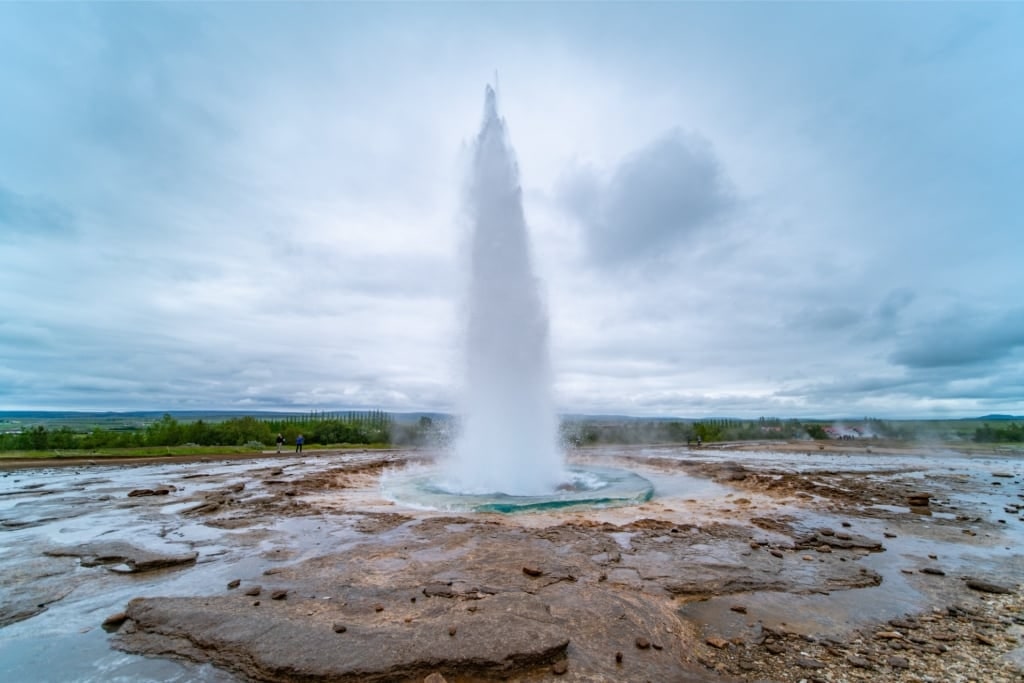
Strokkur, Iceland
The original Great Geysir no longer erupts, but you can walk around the site to see the bubbling mud pots that look like simmering cauldrons on the earth’s surface. Strokkur is an incredible sight, erupting every eight to ten minutes, spouting boiling water and steam up to 98 feet into the air.
At Thingvellir National Park there’s a vast lake—the largest in Iceland—where an underwater rift has formed where the North American and European tectonic plates drift apart. Thingvellir is also the site of the spectacular Öxaráfoss waterfall and the location of Iceland’s first parliament, based here between 930 AD until 1789.
Delve into the park’s visitor center, near the lake’s Silfra snorkeling site, which further explores Thingvellir’s dramatic and storied landscape.
Float Along a River in Dominica
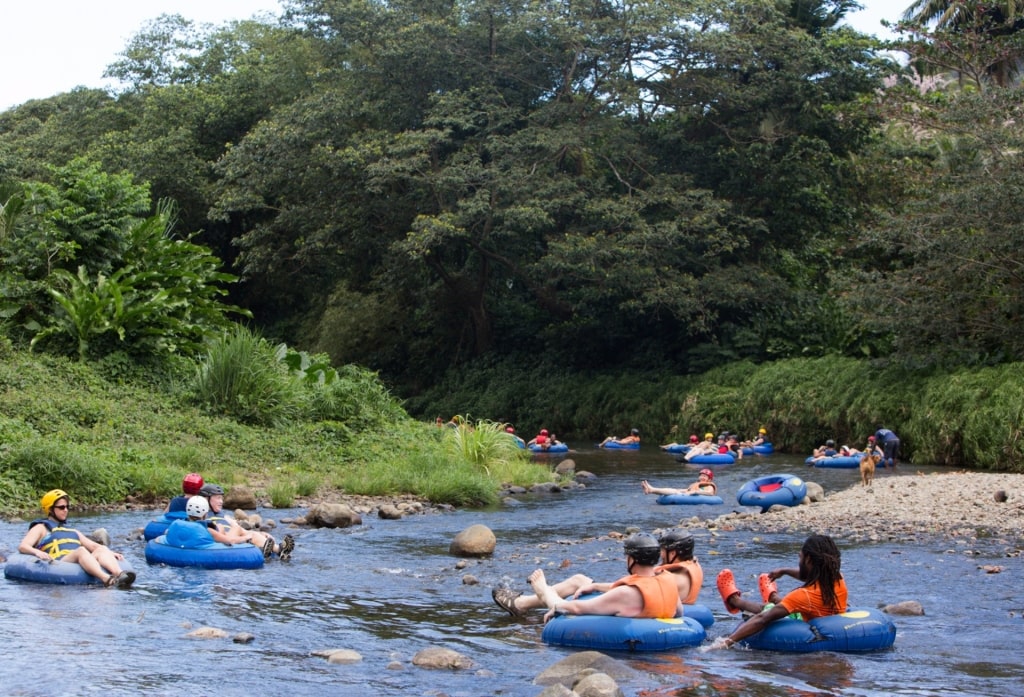
River tubing in Dominica
On lush Dominica, a Caribbean island home to hot springs, tropical rainforests, and magnificent waterfalls, take your family for a fun-filled day of river tubing at Hibiscus Eco-Village.
Tubing at the Hibiscus Eco-Village is one of the best things to do in Dominica. It takes place on the winding Pagua River in east Dominica, north of the Central Forest Reserve, close to the Kalinago territory that’s home to Indigenous Kalinago people.
Enjoy floating gently along some sections of the river and the thrill of mini rapids in others—all while soaking in Dominica’s verdant landscape and listening for the sound of hummingbirds and parrots.
If you plan on carrying your cell phone or a camera, take a waterproof pouch to store it in while you’re floating down the river.
Seek Out Wildlife in Denali National Park in Alaska
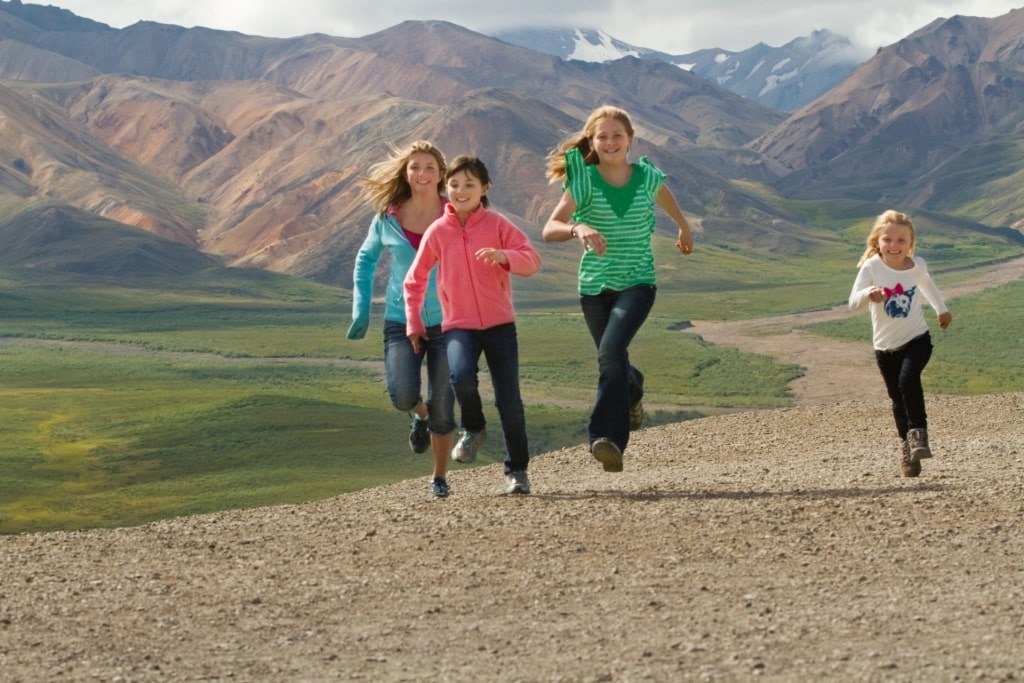
Denali National Park, Alaska
Unique family vacations don’t get much better than exploring the Alaskan wilderness. In Denali National Park, a vast subarctic landscape awaits travelers, not to mention North America’s tallest peak.
High alpine tundra, Taiga forest, and snow-covered mountains provide habitat for Alaska’s Big Five, including grizzly bears, Dall sheep, moose, caribou, and wolves.
There’s just one road and one entrance into the park—with the 92-mile Denali Park Road cutting through the park from east to west—and much of the park’s wildlife can be seen within reach of it.
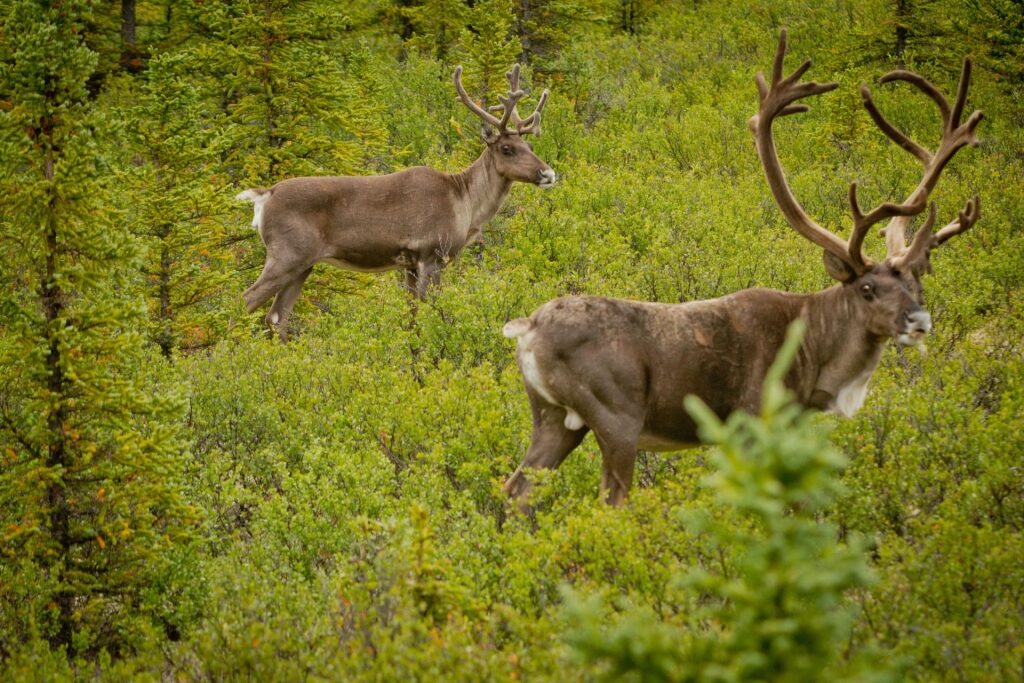
Caribou
You could visit the town of Palmer, home to the annual Alaska State Fair, to witness bison, reindeer, yak, and elk at a local ranch.
If you’re set on looking for grizzly or black bears in the wild, they are often found in forests feeding on patches of wild berries or salmon spawning in the Savage River. The safest way to view Alaska’s wildlife is on a ranger-led guided tour.
Discover the Great Barrier Reef in Australia
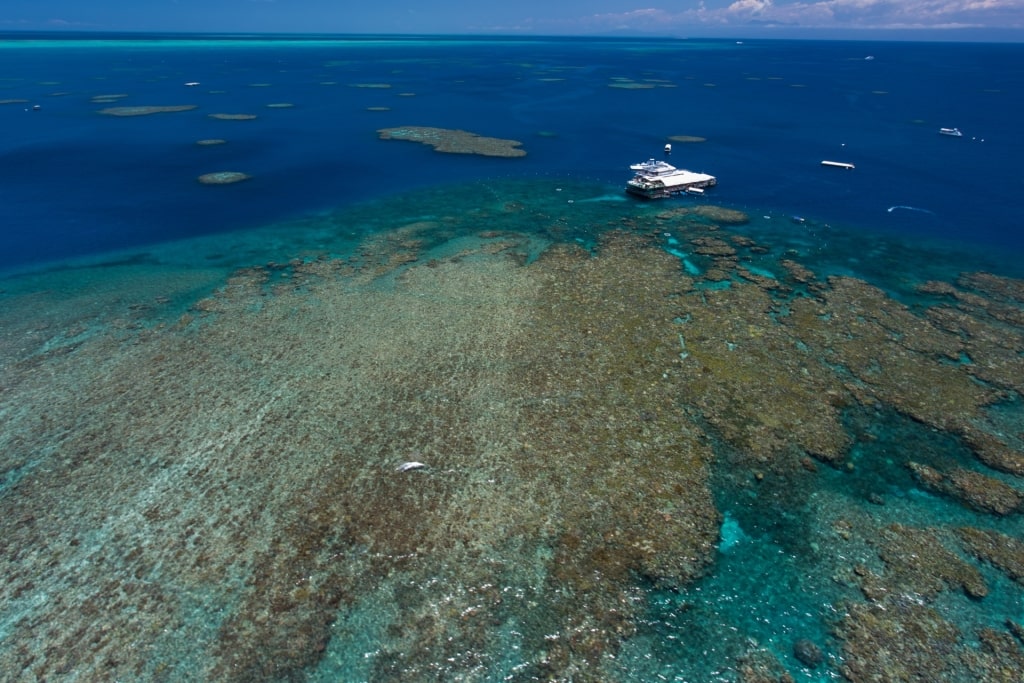
Great Barrier Reef, Australia
With pristine white-sand beaches and crystalline waters, Australia’s Great Barrier Reef makes for a bucket-list family vacation.
An absolute must do in the Great Barrier Reef is snorkeling to see the tropical marine life. This staggering underwater stretch encompasses 134,000 square miles, spanning 1,400 miles off Queensland’s coastline.
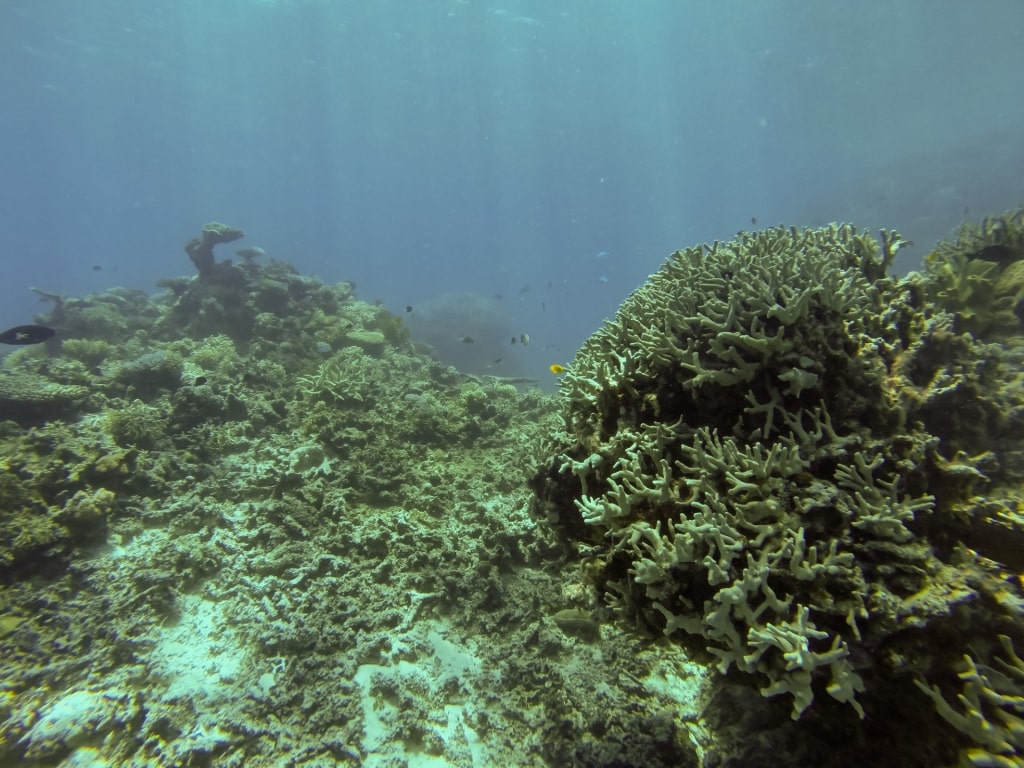
Great Barrier Reef, Australia
Join a guided snorkeling boat trip from Cairns, Port Douglas, or Airlie Beach to make the most of your visit. Experienced guides will lead you to the best spots, loan snorkel gear, and brief you on safety instructions.
Pack a waterproof cell phone or camera wallet and brush up on your underwater photography skills. You might capture some of the region’s breathtaking marine life and colorful corals, including turtles, clownfish, manta rays, and whitetip reef sharks.
You don’t need to be certified to snorkel, or even to have snorkeled before to try it. You will need to be a competent swimmer, though, since you’ll be swimming and snorkeling in the open ocean.
Go Hiking in Norway
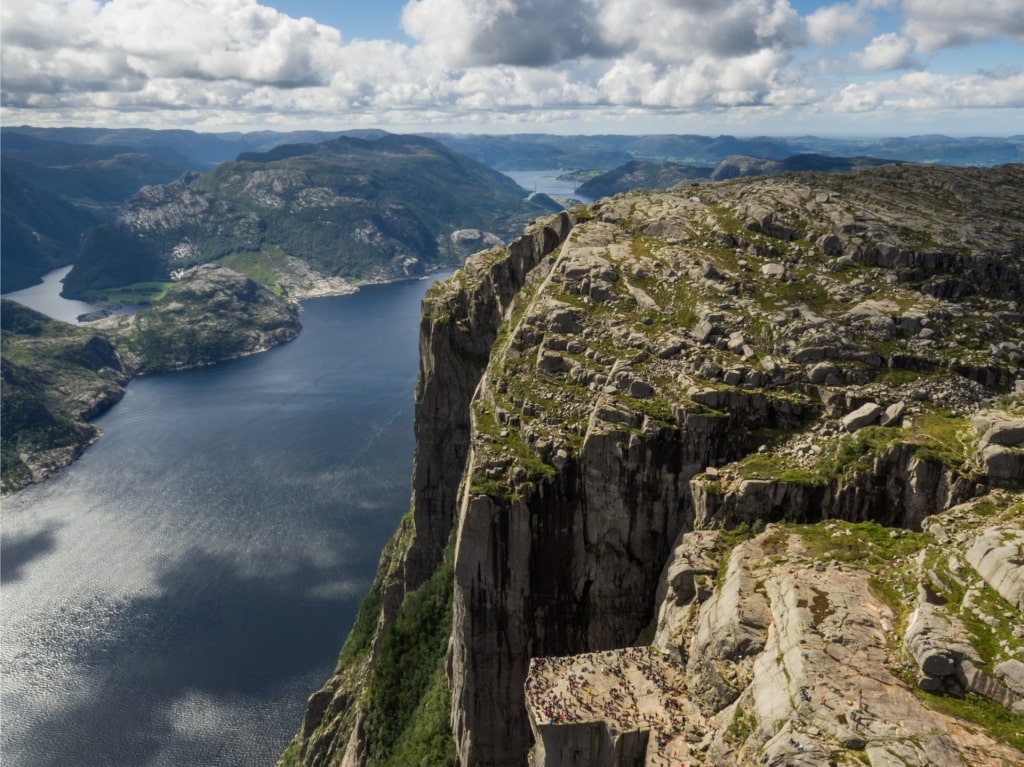
Pulpit Rock, Norway
For active groups, one of the most unique family vacations is to go hiking in Norway. Norway stretches from the Baltic Sea in the south to the Arctic Circle in the north, with a frilly west coast lined with deep fjords and tall mountains that are perfect for picturesque hikes.
One of Norway’s greatest hikes is to Preikestolen, also known as Pulpit Rock—famous for its pancake-flat summit—that soars 1,981 feet above the Lysefjord, around a 40-minute drive from Stavanger.
This exhilarating hike takes around four hours round trip from the starting point, Preikestolen Fjellstue mountain lodge, with guided tours operating daily between April and October.

Briksdal Glacier, Norway
There’s a fantastic 1.5-mile hike near the fjord town of Olden to see the mighty Briksdal Glacier. This picturesque route takes in green meadows with grazing goats and the cascading Kleivafossen waterfall.
Mount Floyen looms over Bergen and offers an easy city hike with fantastic fjord views, woodland trails, and a restaurant at the summit. Oslo has plenty of hikes within easy reach of the city, too, including the peaceful Frognerseteren, which has panoramic views of Oslo and a traditional Norwegian restaurant, Kafé Seterstua, for post-hike meatballs followed by apple cake.
Experience Sete Cidades in the Azores, Portugal
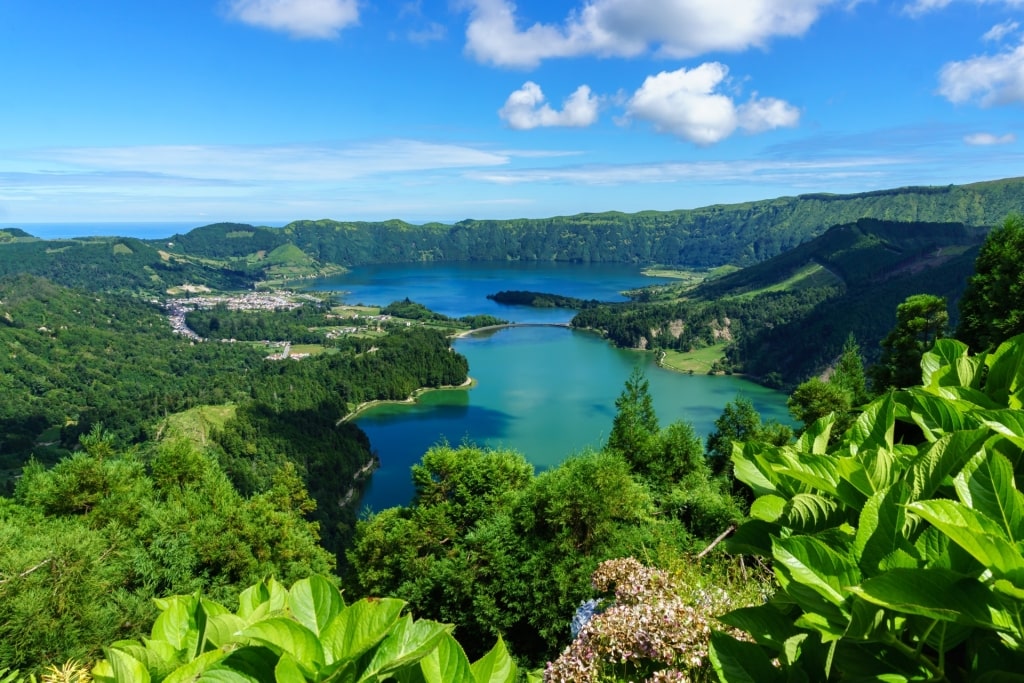
Sete Cidades in the Azores, Portugal
For an off-the-beaten path unique family vacation, head to the remote island of São Miguel in the Azores in the Atlantic Ocean.
In the northwest of São Miguel, Sete Cidades is a shimmering crater lake surrounded by green-covered mountains. The peaks around Sete Cidades offer many hiking trails and viewpoints, including Vista do Rei, which is perched on the rim of the volcanic crater.
A road splits the crater in two—one side has a blue hue and other green, which adds to the mystical allure of Sete Cidades. There are lakeside whitewashed villages to wander around, though adventure-seekers will have more fun renting canoes or kayaks and paddling on the gorgeous lakes.
Climb a Volcano in Sicily, Italy
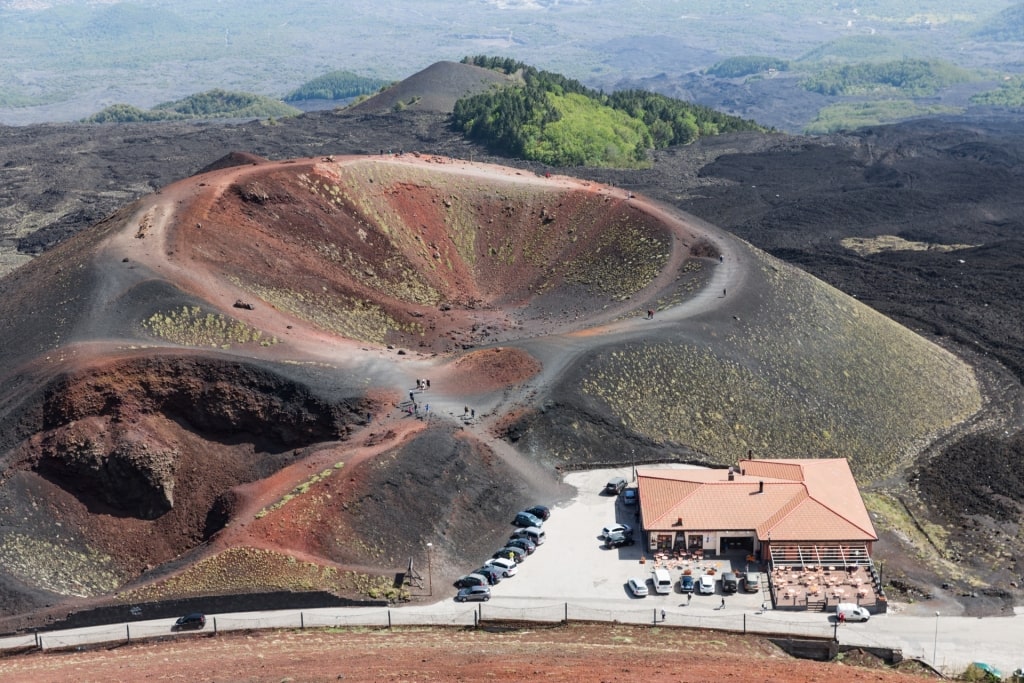
Mount Etna in Sicily, Italy
For a truly unique family vacation, head to Sicily to explore the soaring Mount Etna, the largest volcano in Europe that rises 11,165 feet near the island’s east coast. Etna is also the most active stratovolcano in the world and it’s not uncommon to see ash spewing from its sky-high rim.
Taking your family to experience Mount Etna brings geology, science, and geography classes to life in a captivating field trip to discover a dramatic volcanic landscape of cinder cones, lava fields, and vineyards.
Walk the brim of the Silvestri Craters on the mountain’s southern slopes that were created following a massive eruption in 1892. The craters are no longer active and are perfect for families with adventurous children to scramble around the deep, cinnamon-colored landscape.
Walk to the craters from the roadside parking lot, with facilities including restaurants, bathrooms, and heart-stopping views of Sicily’s untamed southwest.
Read: Insider’s Travel Guide to Sicily
Visit the Birthplace of Apollo on Delos
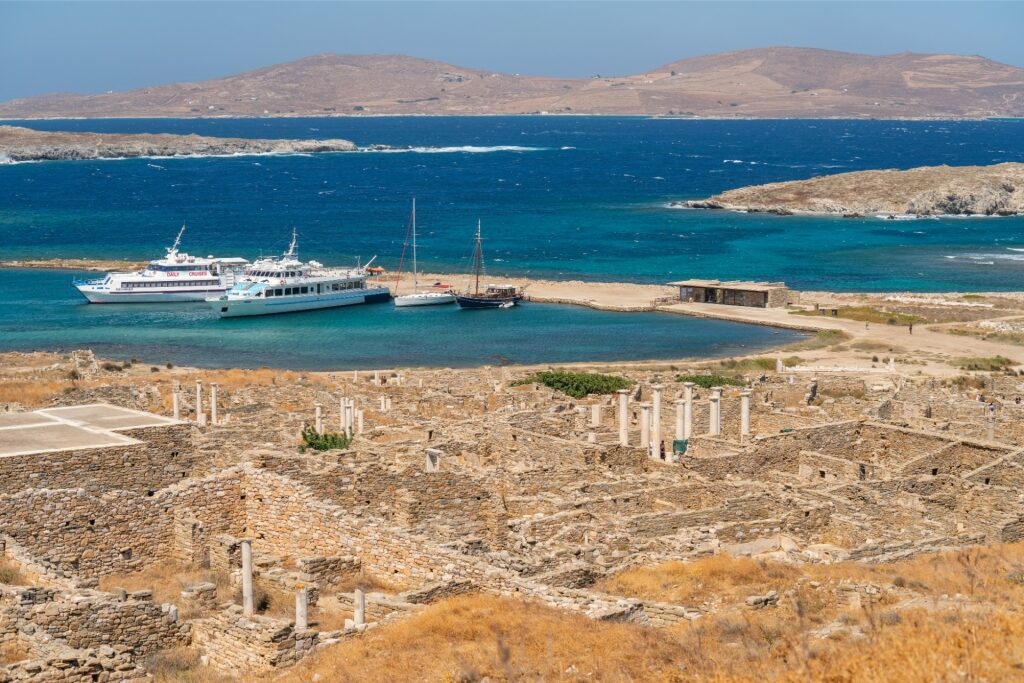
Delos, Greece
As the legendary birthplace of Apollo, the god of light, Delos is the ultimate poster child of ancient Greece and Greek mythology.
This tiny island in Greece’s Cyclades makes for a unique family vacation experience for history-loving families, easily reached by the daily boat service from cosmopolitan Mykonos, just a few miles away.
Delos is home to the remains of a once sophisticated Greek civilization that lasted from the third millennium B.C. to the Paleochristian, or early Christian, era.
Explore the ruins of the temple of Apollo and the remains of public squares, an amphitheater, marketplaces, statues, and street layouts to truly appreciate this 2,000-year-old Greek civilization. Delos’s Terrace of the Lions, a row of towering lions, plus chambers, floor mosaics, and headless statues of gods and goddesses are particularly impressive.
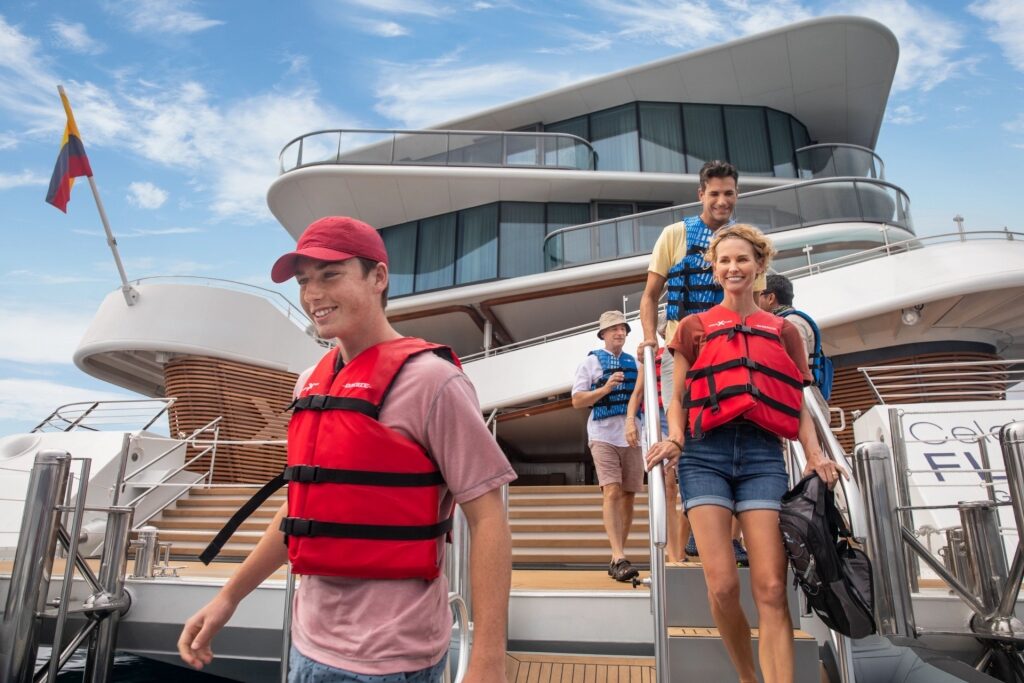
Galapagos
Family vacations have the potential to create lifelong memories and inspire a lifetime of travel.
Search Celebrity Cruises’ unique family vacations to destinations across Europe, the Caribbean, and beyond to book your next getaway.
